Technology
Samsung Galaxy Z Fold 6 review
Published
2 months agoon
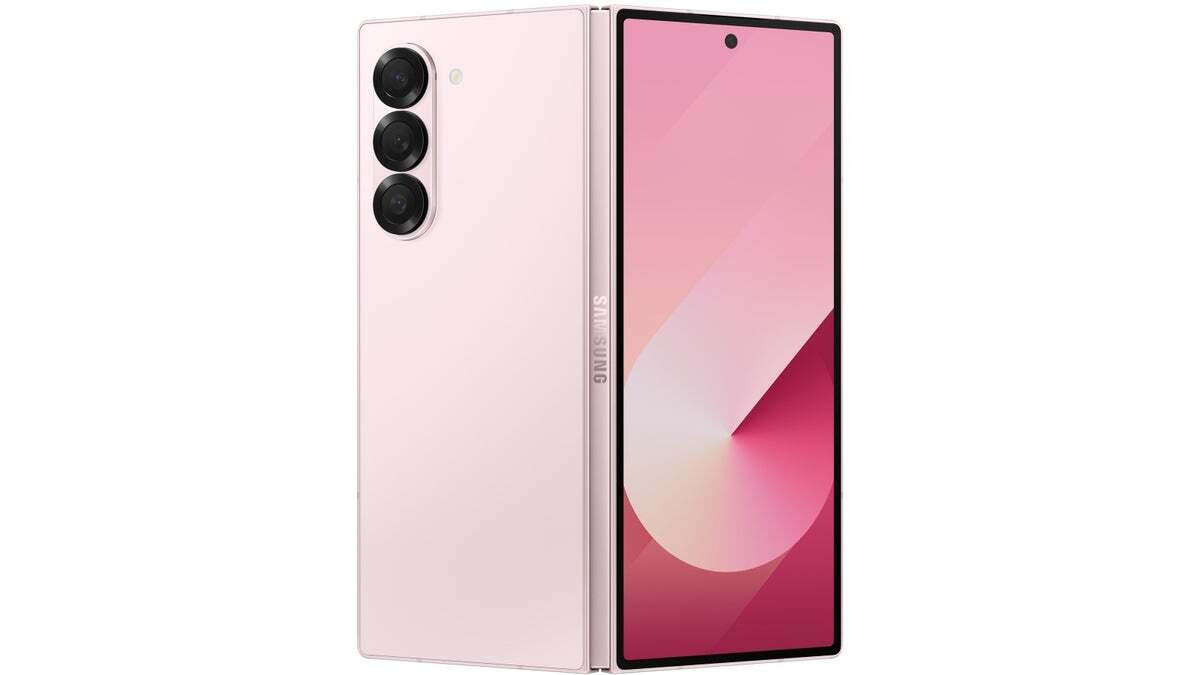

Samsung Galaxy Z Fold 6 review
Maybe until two or three years ago, the experience of holding a device whose screen folds in half was amazing and magical; But now, six generations have passed since the first Samsung Z Flip and Z Fold foldable phones and the arrival of new players such as Google, Oppo, Motorola, Xiaomi and Huawei, folding screens don’t look so enchanting and extraterrestrial; However, the technology used in their construction still fascinates tech geeks.
When the Galaxy Z Fold 6 arrived at Zoomit for review, the question for most of us was no longer whether Samsung’s newest foldable is the best choice for people who are looking for foldable phones; Rather, the question was whether it is possible to put Galaxy Z Fold 6 in the list of the best phones on the market and recommend it to ordinary users without considering its special form factor rating. To be honest, despite the fact that five years have passed since the release of the first generation Z Fold and more than 10 years of research and development before it, foldable phones have not yet reached a stage where they can be justified as a preference for normal phones.
|
Galaxy Z Fold 6 specifications at a glance |
|
|---|---|
|
hardware |
Description |
|
Dimensions |
153.5 x 132.6 x 5.6 mm (open) 153.5 x 68.1 x 12.1 mm (closed) |
|
Weight |
239 grams |
|
Displays |
Original: 7.6-inch LTPO OLED 120Hz – 374ppi Cover: 6.3-inch LTPO OLED 120Hz – 410ppi |
|
chip |
Snapdragon 8 Generation 3 |
|
cameras |
50 megapixel wide 12 megapixel ultrawide 10-megapixel telephoto with 3x optical zoom 4-megapixel selfie under the display 10 megapixel selfie cover |
|
battery |
4400 mAh / 25W maximum charging power |
|
Price |
1900 dollars |
There is no doubt that the Galaxy Z Fold 6 is Samsung’s most successful attempt so far in the foldable phone market; Lighter weight, higher resistance, shallower indentation, and slightly wider dimensions (of course, still not as much as the previous generation OnePlus Open or Oppo Find N3 phones; Samsung, stop being monotonous!).
To sum up, Z Fold 6 feels so good in your hand that you feel the old Folds are broken bricks next to it; But these snail’s advancements are very insufficient to replace phones that have no other advantage except for a larger screen and a classy factor, and are still lacking from normal flagships in terms of camera performance and resistance; When we add to this scale, the Z Fold 6’s price tag is almost double that of the Galaxy S24 Ultra (with a price increase of $100!), the balance is tipped in favor of regular phones.
For those people who are specifically looking for tablet phones, the Z Fold 6 is the safest and most logical choice; But what about people who are just looking to buy a powerful and all-inclusive phone? To find the answer, I suggest you join me (Marjan Sheikhi), Mohammad Hossein Moaidfar, and Zainab Abedirad in the continuation of the Galaxy Z Fold 6 review.
The most beautiful and durable Samsung Fold
On the surface, Galaxy Z Fold 6 is not much different from Z Fold 5; But these millimeter improvements have had a significant impact on making the phone feel more premium; For example, the device is 1.4 mm shorter, 1 mm wider, and 1.3 mm narrower in closed mode to get away from that elongated and unpleasant form factor; The corners of the device are sharper and flatter inspired by the S24 Ultra design; The bezels around the outer display have become symmetrical, and the phone’s weight has dropped by 14 grams, now only 7 grams more than the Galaxy S24 Ultra.

Another change in appearance that has contributed to the beauty of the Z Fold 6 is the matting of the phone frame. This year, Samsung uses a matte design for both of its folding phones, which is probably more compatible with the taste of many users; Of course, to control the weight of the device, Samsung uses aluminum instead of a titanium frame, which apparently has 10% more resistance than the previous generation. Navy, pink, gray, black, and white colors provide users with a variety of options, and the navy model we had for review had a very stylish and beautiful effect.

The biggest and most important changes of Z Fold 6 should not be found in what is visible but in the micro-coarse hammering behind the scenes. In fact, the unsung hero of Samsung’s new foldable is to increase the resistance of the device so that it can have a say in the crowded market of normal phones with high resistance levels and much lower prices.
Samsung says that it has added a new layer of neodymium material to the main screen, which can look soft and flexible like a combination of corn starch and water against finger pressure; But it should be hardened against strong blows to prevent serious damage to the screen; The new double rail hinge, while being narrower, shows better impact resistance, which according to Samsung, is twice as much as the previous generation.

Samsung has also added IP48 certification to its foldables for the first time, which offers a slight resistance to particles of one millimeter and larger than the previous generation’s IPX8; Of course, the dust particles are smaller than one millimeter and you still can’t take your luxury folding car to the beach or desert safely. Like the previous generation, Z Fold 6 can survive water penetration up to one meter for 30 minutes.
The hinge mechanism of Z Fold 6 is designed to keep the screen angle between 45 and 135 degrees, and like the previous generation, it can withstand up to 200,000 arm closures; For comparison, OnePlus guarantees one million wears for its foldable phone. Also, the folding glass panels use the same Gorilla Glass Victus screen protector 2 generations ago, which, according to Samsung, protects the phone against falling from a distance of two meters on surfaces such as asphalt.




With all these words, we expected more from the appearance changes of Galaxy Z Fold 6; Unfortunately, Samsung still insists on the elongated form factor of the Z Fold, while the Pixel Fold and OnePlus Open offer a more reasonable aspect ratio so that working with the phone in closed mode feels more natural and comfortable. Although the indentation in the middle of the screen is less noticeable than before thanks to the extra layer and a more resistant hinge, it still feels uncomfortable when scrolling and watching movies; While the Chinese competitors have solved the problem of the depression in the middle of the screen to a large extent.
bright and eye-catching displays; No generational progress
The main and external display of Z Fold 6 compared to Z Fold 5 has had minor and almost imperceptible improvements; The maximum brightness under intense light conditions is now about 8% higher than before and the 22.1:9 aspect ratio of the cover display offers a better experience than before and close to Sony Xperia 1 Mark 5; But it is still far from what we have in mind and are used to from a normal phone.
More precisely, the 7.6-inch main display of the Z Fold 6 with a resolution of 2160 x 1856 pixels and an adaptive refresh rate between 1 and 120 Hz is not much different from the previous generation, and with an aspect ratio of 20.9:18 in open mode, it looks almost square. ; The selfie camera under the display is hardly visible and does not cause any disturbance.
As we mentioned earlier, the depression in the middle of the display has been reduced; But it is still noticeable when scrolling and watching videos; Considering that OnePlus and Xiaomi solved the problem of the indentation in the middle of the screen last year, we expected Samsung to catch up with the Chinese competitors this year.

The external 6.3-inch screen of the Z-fold with a resolution of 2376 x 968 is slightly different from the image ratio of 23.1:9 and, as before, uses the old panel with an adaptive refresh rate of 120 Hz. Synchronizing the refresh rate between screens makes us have a unified user experience; This is not the case with the Z Flip 6 with a 120 Hz main display and a 60 Hz external display.
Samsung says that this year, the Z Fold’s internal and external display can achieve 2,600 nits of brightness; In the manual brightness mode and when Extra Brightness was on, we obtained the maximum brightness of the main display of 940 nits and the maximum brightness of the cover display of 926 nits, which does not show much improvement compared to the previous generation; But it still appears at the brightness level of flagship phones.
|
Galaxy Z Fold 6 display performance against competitors |
|||||||
|---|---|---|---|---|---|---|---|
|
Product/Test |
Minimum brightness |
Maximum brightness |
contrast ratio |
sRGB |
DCI P3 |
||
|
manual Automatically |
local |
cover |
Average error |
cover |
Average error |
||
|
Galaxy Z Fold 6 (main display) |
0.9 |
940 2000 |
∞ |
99.2 |
3.2 |
97.3 |
4.4 |
|
Galaxy Z Fold 6 (display cover) |
1 |
926 2150 |
∞ |
96.7 |
2.5 |
96.1 |
4 |
|
Galaxy Z Fold 5 (original) |
0.71 |
604 1843 |
∞ |
96.8 (Natural) |
3.3 |
99.9 (Vivid) |
4.7 |
|
Galaxy Z Fold 5 (Cover) |
1 |
603 1885 |
∞ |
91.9 (Natural) |
2.7 |
99.9 (Vivid) |
4.1 |
|
Pixel 8 Pro |
2.19 |
1165 1905 (HDR) |
∞ |
100 percent (Natural) |
1.0 |
98 percent (Adaptive) |
2.4 |
|
Honor Magic 6 Pro |
2.2 |
950 3300 (HDR) |
∞ |
99.3 percent (Normal) |
0.9 |
86 Percent Vivid |
3.6 |
|
Galaxy S24 Ultra |
0.7 |
914 2635 |
∞ |
102 |
3.5 |
81.8 |
4.4 |
|
iPhone 15 Pro Max |
2.15 |
1041 1950 |
∞ |
99.7 |
0.9 |
— |
— |
Switching to auto-brightness mode and exposure to harsh lighting conditions, the brightness rises to an impressive 2,000 nits for the main display and 2,150 nits for the cover display, which is closer to what Samsung promises. Also, the highest level of brightness when playing HDR content on the main and external display reaches 2100 nits and 2150 nits, respectively, which is not much different when interacting with SDR content.
The Koreans have apparently made a change in the panel of this year’s phones, which strangely cannot fully cover the wide color space of DCI-P3; This was very shocking to us in our review of the S24 Ultra. Fortunately, Samsung realized the weakness of its screens in the coverage of the color space and has added a slider called Vividness to the Vivid color profile of these phones, by increasing it, we managed to reach the DCI-P3 coverage from about 85% to a reasonable amount of 97%.

Except for this particular case, both the main and external displays of the Z Fold 6 show a good performance in terms of displaying colors; But they do not have the accuracy of normal flagships such as Pixel 8 Pro or iPhone 15 Pro Max. The colors on the Z Fold 6 displays in the Natural profile, which covers the sRGB color space, are relatively accurate and neutral; But in the Vivid profile of the DCI-P3 color space, which is more saturated than normal, they have lower accuracy than normal phones and tend to be produced coldly.
Artificial intelligence; The only software innovation of Z Fold 6
I feel that after talking about the form factor and performance of Samsung’s new foldable displays, it’s time to answer the basic question: whether the advantage of the Galaxy Z Fold 6’s large and foldable display, which is the main reason for the device’s astronomical price, really affects the user experience. Does it matter or not?

In our one-week experience with the Galaxy Z Fold 6 in various scenarios, we can say that the tablet nature of the phone makes a noticeable difference when playing games, viewing gallery images, and some multitasking applications; But in watching movies, surfing the web, reading books or writing long texts, it does not have a significant advantage over normal phones.
The reason why watching videos on the Fold’s widescreen isn’t much different than on a regular phone like the S24 Ultra is because most videos have a 16:9 aspect ratio, and when playing on a 21.6:18 screen, there’s a lot of top and bottom. The screen inevitably goes black; An event called “Letterbox”.

However, watching movies on the Z Fold 6 is a lot of fun thanks to the super high-quality stereo speakers. With the Z Fold 6, we watched parts of John Wick and Oppenheimer movies, which made for an epic and exciting experience due to the excellent volume, pounding bass, and clarity of dialogues in busy scenes and the details of the sounds of beatings and explosions. The performance of the speakers in playing music is also excellent, and in addition to the clean production of middle frequencies and bold treble, it showed a very good performance in distortion control.
If we want to talk about the applications of multitasking in Galaxy Z Fold 6 in more detail, apart from the possibility of dividing the screen into multiple windows and opening different applications floating, there is an important feature called Flex Mode, which divides the user interface into two separate parts as soon as the device is folded. .

In Flex Mode, the upper area of the screen is dedicated to the application itself and the lower area is dedicated to some control functions that provide different functions depending on the type of application; For example, in the YouTube application, control buttons are placed at the bottom of the screen so that these floating elements do not disturb the user’s vision while watching the video, and on the other hand, it is easier to move the video forward and backward, which is a positive point.
Currently, some default programs and a limited number of applications support such a mode, which is generally intended for folding devices and not just the Fold series, and Samsung has designed a replacement feature called Flex Mode Panel to fill this void. A condition where the device can be used in a semi-bent state. By activating the Flex Mode Panel, the lower part of the screen turns into a virtual trackpad so that you can work with the Z Fold 6 like a laptop.

Of course, it is better to keep the similarity to the laptop at the level of a conceptual plan; Because the experience of working with the device in Flex Mode is far from words than you can imagine, and the reason is clear, which is due to the very wide and limited dimensions of the screen in the curved mode. In this situation, if you put the phone on one side and work with the trackpad on the other side, and suppose you are surfing the web, you have to constantly scroll on the page.

In addition, multitasking and moving between open programs in Flex Mode practically loses its function, and for this purpose, it is better to settle for the device’s Unfolded mode. However, as a workaround, when the Flex Panel is enabled, the user interface elements are made smaller so that more of the content can be seen within this area.
The challenges of working with Flex Panel do not end there; For example, the keyboard is not optimized for this mode; That is, while typing, it is not possible to use the trackpad at the same time as the keyboard, and to control the mouse pointer, it is necessary to leave the keyboard; Even though Split Mode is considered in the keyboard; But it is better not to indulge in two-finger typing with Z Flip 6.
Despite the fact that Samsung in terms of the richness of features and optimization of the One UI user interface; Especially in foldable devices, moves ahead of its competitors; in my opinion, the introduction of such important and possibly fateful products solely focused on artificial intelligence, while not focusing on improvements and new capabilities for better multitasking, has fueled the uncertainty of the future of foldable devices to some extent.
With all this said, the One UI 6.1.1 Galaxy Z Fold 6 user interface is exemplary in terms of responsiveness, software optimization, and speed of operation, and rarely bugs, crashes, or visual gaffes, especially when switching between the internal display and the cover and Flex Mode, multitasking and You will experience moving windows floating; In other words, it can be said that such an experience cannot be found in the user interface of other companies’ foldable devices.
We talked about artificial intelligence and in response to the question of to what extent Samsung has used the potential of Z Fold 6 to introduce artificial intelligence capabilities, we have to say that imagine that you have traveled to a country whose language you do not know and now you want the Samsung translator program. Use it called Interpreter to talk to others in [your?] language. In this case, your own sentence will be shown on the internal screen and the translated sentence will be shown to the audience in the form of text and audio from the cover screen.

The Interpreter feature is all that Samsung has used in Galaxy Fold 6 as a showcase to introduce Galaxy AI, which looks attractive and practical at first glance; But really in your own language? no Since Galaxy AI features do not support Farsi, even in your own language you cannot interpret the dream that Koreans have seen for their users, at least for Iranian users it seems.
Therefore, the capabilities of artificial intelligence cannot have a strong role to justify the stubborn and defensible choice of this phone; Because due to the lack of Persian language, practically many of them which are used in everyday use are useless for Iranians.

Live translation of calls and chats of various messengers, converting voice to text in audio files, and summarizing the content of sites and notes in the browser and the Samsung Notes application, are among the features that are not very useful for Iranians, and whether Samsung has a plan to add Farsi or not, is still in the dark. It is ambiguous. On the other hand, according to the company’s official announcement, a number of Galaxy AI features will no longer be available for free after 2025.
Another category of Galaxy AI features, which at least geographically is not limited to a certain range of nationalities and Samsung has given more maneuvers on them, are features based on visual artificial intelligence. A number of these features were available with AI, such as removing or replacing objects and visual distractions, and now an imaginary object can be made to exist by dragging it.

The new function of the Galaxy AI collection called Sketch to Image can be used in three parts; You can call the mentioned tool through the Edge Panel and draw directly on the screen and turn your drawing into a graphic design or real objects or do the same in Samsung Notes.
The accuracy of the process of converting user drawings into real objects depends on the complexity of what you have drawn; After generating the design, you can also view various other proposed examples and choose one from among them. Also, in the gallery, when editing the photo, you can draw the desired objects and add them to the photo. Designs are produced based on the type of photo and adapted to it.

Speaking of drawing, it is not bad to mention that the Galaxy Z Food 6 does not support the regular S Pen that comes with the S series phones; As soon as we tried the Sketch to Image feature with the Galaxy S23 Ultra pen, a warning message was displayed saying that the S Pen Pro or S Pen Fold Edition should be used; Because normal pens damage the Samsung folding screen.

Another feature that has joined the Galaxy AI family is called Portrait Studio, which turns the recorded images of the face into various types of cartoon images and is more fun; The Live effect feature also gives face photos a 3D and animated look.
In the form of Galaxy AI capabilities, Text Composer has been added to the Samsung keyboard, which can be very useful for producing text with different tones from formal to colloquial, and for many applications, from letter writing to captioning for social networks, and in this case, it is exceptionally compatible with the Persian language.
Good photography experience, but not as good as camcorders
It is true that Galaxy Z Fold 6 is the most advanced Samsung product in terms of display technology; But in the field of photography experience, not only has there been no generational progress; But it has not reached S24 Ultra. Users who intend to buy Z-Fold, fully focused on the foldable screen, will have a satisfactory photography experience; But this experience is not at the level of expectations from Samsung’s most expensive product.

Perhaps the limitations of foldable devices are still the reason for stopping their evolution and the manufacturers are preparing a fundamental revision to be able to remove various limitations; However, controlling their final price for the customer still seems challenging. In any case, the Galaxy Z Fold series comes with the latest flagship chip every year, and in the photos captured with their camera, we see improvements, albeit small, at least thanks to the chip’s more advanced ISP. In the following, we will review the specifications of the Galaxy Z Fold 6 camera together.
The wide-angle camera uses the same 50-megapixel Samsung ISOCELL GN3 sensor that is widely used in products such as the Galaxy S24 and Galaxy S23 FE. This 1/1.57-inch sensor with 1.0 µm pixels relies on Tetrapixel technology to combine all four adjacent pixels to capture photos with a higher light absorption rate and 12.5MP resolution. To direct the light to the sensor, there is a lens with a focal length of 23 mm an aperture of f/1.8, and the possibility of optical stabilization.

The ultrawide camera uses Samsung’s 12-megapixel ISOCELL 3KU sensor , the size of each 1/3.2-inch sensor pixel is 1.12 micrometers, and behind a lens with a focal length of 13 mm and an aperture of f/2.2, which covers a 123-degree field of view. Due to the fixed focus range and lack of automatic focus, it is not possible to record macro images with the ultrawide camera.
The telephoto camera uses the same 10MP ISOCELL 3K1 sensor. This 1/3.94-inch sensor uses 1.0 micrometer pixels. Samsung uses it for the telephoto lens with f/2.4 aperture and 69mm focal length with 3x optical zoom in the Z Fold and Galaxy S24. Optical stabilizers and image-gyroscopic electronics have been used to reduce the intensity of vibrations when photographing a distant view.
The high price of the Galaxy Z Fold 6, regardless of its difference, forced us to measure its camera performance compared to the Pixel 8, which has a price below 50 million Tomans and uses an almost similar camera set; Does this foldable phone have a special advantage over a flagship phone with a much lower price or not?
Main camera performance (wide)
According to the photos below, the Galaxy Z Fold 6’s wide camera can take photos with a wider dynamic range, and the light and dark points of the image have better conditions than the pixel in terms of light balance.
Wide Pixel 8 photo

Wide photo of Galaxy Z Fold 6
Wide pixel photo cropping 8

Galaxy Z Fold 6 wide photo crop
If we want to talk about the details, we have to give the winning card to the Pixel 8 because it pulled out the details from the heart of the image a little better than the Z Fold 6 and we see even less noise in the photos.
Wide Pixel 8 photo

Wide photo of Galaxy Z Fold 6
Wide pixel photo cropping 8

Galaxy Z Fold 6 wide photo crop
In terms of color, the Pixel 8 is in better condition; because it has been able to record colors close to reality; While the colors on the Galaxy Z Fold 6 are somewhat saturated and exaggerated, they may look more attractive and captivating.
Wide Pixel 8 photo

Wide photo of Galaxy Z Fold 6
Galaxy Z Flip 6 main camera photo gallery












Ultrawide camera performance
Similar conditions apply to ultrawide camera photos. Z Fold 6 photos have better conditions in terms of dynamic range; But the Pixel 8 has been able to show a better performance than the Galaxy Z Fold 6 without artificializing the photo and making it sharper, giving the audience the feeling of a detailed photo.
Pixel 8 ultrawide photo

Ultrawide photo of Galaxy Z Fold 6
Pixel 8 ultrawide image cropping

Cutting the ultrawide photo of Galaxy Z Fold 6
Regarding the colors, it can be said that the Pixel 8 records more realistic images.
Pixel 8 ultrawide photo

Ultrawide photo of Galaxy Z Fold 6
Galaxy Z Flip 6 ultra-wide camera photo gallery




Telephoto camera performance
The telephoto camera of the Galaxy Z Flip 6 performs well in daylight and captures noise-free photos. The contrast of telephoto camera photos is slightly lower than wide and ultrawide; But in terms of color, dynamic range, and details, it will not disappoint you at all; Especially when you are photographing a specific subject (such as cats) at a not too far distance.

Wide photo of Galaxy Z Fold 6

Telephoto photo of Galaxy Z Fold 6

Galaxy Z Fold 6 wide photo crop

Galaxy Z Fold 6 telephoto crop
With a telephoto camera, you can take much more interesting portrait images than with a wide-angle camera. According to the photos below, you can understand the importance of this camera in terms of being close to reality.

Portrait photo of the main camera

Galaxy Z Flip 6 telephoto camera photo gallery






Night photography
The performance of the Galaxy Z Flip 6 cameras at night is also generally satisfactory. There is no news of noise and pseudo-like effects that enter the photo due to excessive processing or the high exposure time and the details; They are especially well depicted in the wide-angle camera.

Ultrawide photo

wide picture

Telephoto photo
Some image processing effects or loss of detail may be seen in places where there is focus of light; But regarding the photos of the telephoto camera, I have to shorten my position a little, because due to the smaller size of the sensor, it becomes a little more difficult to record an accurate and clear photo, and the phone becomes the hands of the algorithms.
The performance of selfie cameras
Galaxy Z Flip 6 uses two selfie cameras, one for the internal display and the other for the cover display. The selfie camera of the internal display is of the type below the screen and uses a 16-megapixel IMX471 sensor to absorb the necessary light from the empty space between the pixels of the screen. For this reason, it can optimally use only 4 megapixels of its area. The selfie camera of the cover uses a 10-megapixel IMX374 sensor .

Selfie camera photo (internal display)

Selfie camera photo (cover display)

Selfie camera photo cropping (internal display)

Selfie camera photo cropping (cover display)
The function of the selfie camera under the display is only suitable for video conferencing and video calls; Because with a little magnification, you will notice the fading of details and also a layer of blur in the photos.
Fortunately, there are no limits to taking selfies with the Z Fold 6, even if you are not satisfied with the selfie camera on the cover, you can take the device from the rear cameras in front of you and use the screen of the cover to record a selfie of the highest quality.
flagship chip; A guarantee for a perfect experience
Despite the fact that Galaxy Z Fold 6 does not show much progress in terms of software, camera, and of course the use of the potential of the folding screen compared to the previous generation, we must admit that it still offers the most complete user experience from a folding phone with a focus on multitasking and should not be Let’s not forget that an important part of this achievement, in addition to the software, will be owed to its hardware collection.

This year, Samsung has considered a customized version of the most powerful Android chip for its foldable flagship. The SD 8 Gen 3 chip with the For Galaxy extension beats at the heart of Z Fold 6 so that even the most demanding users can be comfortable with Z Fold 6’s performance.
The version of SD 8 Gen 3 for Galaxy has differences in the frequency of the CPU cores from the normal version of the chip, but in terms of the arrangement of the cores, it does not change and performs its processing tasks with the same combination of 1+3+2+2. The high-power core in the For Galaxy version works with a higher frequency of 90 MHz, and the low-power and middle cores work with a lower frequency of 100 MHz.
Since artificial intelligence also plays a prominent role in the user experience of the Z Fold 6, Qualcomm’s chip seems to be a very worthy choice for Samsung’s foldable; Because SD 8 Gen 3 uses a combination of CPU, GPU, and NPU for artificial intelligence processing, and devices equipped with this chip can handle a significant amount of AI-related tasks offline.
|
Galaxy Z Fold 6 performance against competitors |
|||||
|---|---|---|---|---|---|
|
Product/benchmark |
chip |
Speedometer 2.1 |
GeekBench 6 |
GFXBench |
|
|
Web browsing experience |
GPU computing power |
CPU computing power |
Game simulator |
||
|
Vulkan/Metal |
Single/Multi |
Aztec Ruins Onscreen/1440p |
|||
|
Vulkan/Metal |
|||||
|
Galaxy Z Fold 6 |
Snapdragon 8 Gen 3 For Galaxy |
230 |
16627 |
2227 6684 |
63 61 |
|
Galaxy Z Fold 5 |
Snapdragon 8 Gen 2 For Galaxy |
174 |
9123 |
1937 5114 |
57 58 |
|
Xperia 1 Mark 6 |
Snapdragon 8 Gen 3 |
268 |
16385 |
2186 6555 |
69 112 |
|
Xiaomi 14 Ultra |
Snapdragon 8 Gen 3 |
167 |
16619 |
2165 6886 |
69 77 |
|
Galaxy S24 Ultra |
Snapdragon 8 Gen 3 for Galaxy |
240 |
17012 |
2262 7005 |
75 81 |
|
Pixel 8 Pro |
Tensor G3 |
131 |
5854 |
1766 4554 |
37 37 |
|
iPhone 15 Pro Max |
A17 Pro |
475 |
27503 |
2960 7339 |
59 46.8 |
Taking a superficial look at the benchmark results, we realize that the Galaxy Z Fold 6 has nothing less than other Android flagships in terms of processing power; So even if we don’t consider the other weak points of the new Fold, we can say that at least in terms of performance we are on the side of a worthy flagship. However, Galaxy S24 Ultra is still Samsung’s strongest flagship, and Z Fold 6 is not going to shake this position.
Samsung says that this year it has improved the cooling system of the Z Fold 6 and equipped its new foldable with a larger vapor chamber. Considering the slimmer phone and the challenges it can put in the way of cooling the device, Samsung’s attention to the cooling system seems quite logical.

The result of Samsung’s arrangements for the cooling system can be clearly seen in the execution of heavy processes such as games. Games such as Call of Duty: Mobile and Real Racing 3 even on the latest graphics settings do not cause any problems for the Z Fold 6 and run at the highest frame rate. The Genshin Impact game experience also happens with the most graphic details, smoothly and without any slowness, and in terms of temperature, it does not cause any problems for the phone body.
The game Call of Duty Warzone, which at least in the current versions, poses a great challenge to the most powerful smartphones, also became a problem for the Z Fold 6. If your expectations are high and you want to run the game on the highest possible graphics settings, not only will you not get a good experience from the game (the number we reported in the table), but the device will heat up (in areas close to the camera and on the display, about 43 to 45 degrees Celsius).
|
Galaxy Z Fold 6 performance in games |
||
|---|---|---|
|
Games/Parameters |
Graphics settings |
Average frame rate |
|
Call of Duty: Warzone |
Peak |
25 frames per second |
|
Real Racing 3 |
— |
120 frames per second |
|
Genshin Impact |
Highest |
60 frames per second |
|
Call of Duty: Mobile |
Very high |
60 to 70 frames per second |
To have the smoothest possible game experience, we set the graphics settings to the game’s default preset named Smoother Gameplay. In this case, the phone does not heat up and the game can be played with a stable frame rate of 60 frames per second. Of course, in these settings, the game’s graphics are not impressive at all.
With all the interpretations and regardless of performance discussions, we must not forget that thanks to the large screen and a lot of space under the user’s hands, playing on the Z Fold 6 even in the worst conditions offers an enjoyable and unrepeatable experience.
Besides the games, the performance stability test can also be a suitable meter and criterion to measure the optimal performance and operation of the cooling system. In the graph obtained from the stress test, you can see that despite the sharp drop in the score in the initial rounds of the test (due to high processing pressure and the phone overheating), the Z Fold 6 has relatively stable performance in the later rounds of the test and does not experience sudden ups and downs. In terms of points, the Z Fold 6 is slightly lower than the iPhone 15 Pro Max and its fellow Galaxy family, the Galaxy S24 Ultra.
The Z Fold 6’s hardware improvements end there, and other complementary parts, namely RAM, storage, and battery, remain unchanged. Samsung launches the Galaxy Z Fold 6 with the same configurations as last year’s model, namely 12 GB of RAM storage space of 256 and 512 GB and 1 TB of UFS 4.0. Naturally, in none of the configurations, the user will not feel any discomfort about running different programs at the same time, especially during multitasking.

The 4400 mAh battery of the Z Fold 5 is also used in the new generation, and unfortunately, Samsung still insists on the 25-watt charging speed. Support for wireless charging at a speed of 15 W and reverse charging at 4.5 W are other specifications that we should know about Z Fold 6.
In order to have a better view of the difference in charging between the large internal display and the smaller external display on the Samsung Fold, we ran the usual Zoomit tests on both displays separately. Relying on the main screen of the Z Fold 6 and in Zomit standard tests (display brightness of 200 nits and cutting off all the phone’s communication features), you can get about 25 hours of video playback and about 11 hours of daily use. Although the charge on the main display has not improved compared to the previous generation, it is quite sufficient for a normal working day.
Read More: Samsung Galaxy Z Fold 5 review, price and specifications
|
Galaxy Z Fold 6 battery life against competitors |
||||
|---|---|---|---|---|
|
Product/benchmark |
Display |
battery |
Play video |
Everyday use |
|
Dimensions, resolution and refresh rate |
milliampere hour |
minute: hour |
minute: hour |
|
|
Galaxy Z Fold 6 (main display) |
7.6 inches, 120 Hz 2160 x 1856 pixels |
4400 |
25:10 |
10:54 |
|
Galaxy Z Fold 6 (display cover) |
6.3 inches, 120 Hz 2376 x 968 pixels |
4400 |
39:50 |
16:01 |
|
Galaxy Z Fold 5 (main display) |
7.6 inches, 120 Hz 2176 x 1812 pixels |
4400 |
26:40 |
10:31 |
|
Galaxy Z Fold 5 (display cover) |
6.2 inches, 120 Hz 2316 x 904 pixels |
4400 |
23:30 |
13:56 |
|
Xperia 1 Mark 6 |
6.5 inches, 120 Hz 2340 x 1080 pixels |
5000 |
33:00 |
19:00 |
|
Xiaomi 14 Ultra (China) |
6.73 inches, 120 Hz 3200 x 1440 pixels |
5300 |
20:38 |
12:19 |
|
Galaxy S24 Ultra |
6.8 inches, 120 Hz 3088 x 1440 pixels |
5000 |
27:41 |
14:05 |
|
Pixel 8 Pro |
6.7 inches, 120 Hz 2992 x 1344 pixels |
5050 |
— |
11:12 |
|
iPhone 15 Pro Max |
6.7 inches, 120 Hz 2796 x 1290 pixels |
4441 |
24:43 |
— |
If we only consider a user with a 6.2-inch external screen, the charging time will be around 40 hours in video playback and around 16 hours in daily use, which is compared to the previous generation and other smartphones of the same category (whose screen dimensions cover the screen). fold is also bigger) shows a noticeable advantage.
Generational progress is no longer a criterion
Galaxy Z Fold 6 with a more stylish form factor and higher resistance, up-to-date processor, and artificial intelligence capabilities is undoubtedly the best Korean foldable, but Samsung’s failure in terms of charging speed and especially design has made it no longer the only or even 100% best choice in the foldable market; For example, OnePlus Open and Mix Fold 3 both support 67W charging and have almost solved the problem of indentation in the middle of the screen; But the charging speed of Z Fold 6 reaches 25W and the indentation of its screen is still visible.
Samsung is ahead of the competition in terms of the user interface, software updates,s and camera performance; But it has maintained this gap for at least three generations, and it is not unlikely that the new generation of OnePlus, Xiaomi, or Google foldables will surpass Samsung in such cases.
Generational progress is no longer a criterion for foldable with a not-so-justifiable price; Because Samsung’s challenge is not limited to the emergence of new competitors in this still-deserted market. 6 generations have passed since the production of Galaxy Z Fold, But its sales are only 1.5% of the total market of sold phones. Since there are still no attractive and innovative applications that use the full potential of the dual display, it is unlikely that the Z Fold 6 will be able to persuade more users to buy hybrid phones.
As long as the basic problems of foldables are not completely resolved and their price is not economically justified, it is difficult to recommend their purchase to ordinary users. For now, the only advantage of these phones is the classy factor and larger screen for multitasking applications; However, those people who really need multitasking, with the same budget, can think of other tempting options; For example, a Galaxy S24 Ultra has faster charging speed, stronger cameras and higher resistance, next to a Galaxy Tab S9 or MacBook Air M3 tablet that does not have a magic screen and does not fit in a pocket; But they are highly portable and provide the user with more workspace.


You may like
-




What is Kali Linux? Everything you need to know about this popular but mysterious distribution
-

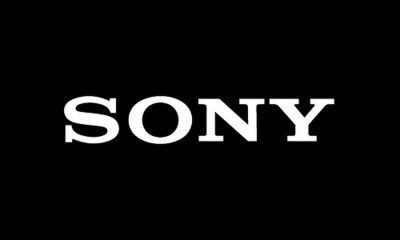


Sony Brand Story; From the production of rice cookers to becoming one of the most famous companies in the world
-




How did the people of the past imagine the future?
-




The story of the Yahoo brand, the story of the fall of a unicorn startup
-

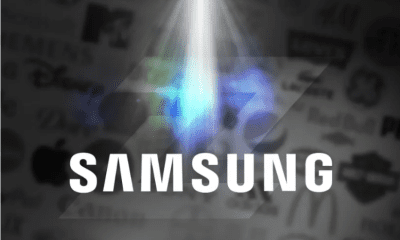


Samsung brand story; Full-view mirror of Korea’s commercial history
-




How to recognize the name of the font from its picture?
Technology
What is Kali Linux? Everything you need to know about this popular but mysterious distribution
Published
1 day agoon
15/09/2024

What is Kali Linux? Everything you need to know about this popular but mysterious distribution
In today’s technology era, as devices and tools become more advanced, their negative and destructive side also become more complex, and as a result, interaction with them requires more care. Currently, with the pervasiveness of the Internet the strong dependence of our daily lives on it, and the emergence of artificial intelligence, cyber threats have also increasingly spread, and the news of hacking various platforms is heard from left and right.
Considering the cyberization of part of people’s lives (entertainment, chat, and earning), the importance of strong cyber security measures cannot be ignored. Kali Linux or in English Kali Linux is a powerful and open-source Linux distribution that is specifically used for penetration testing and digital research and is considered one of the most important tools in the field of cyber security.
 Kali Linux 2024.3
Kali Linux 2024.3
Every techie has probably thought of installing Kali Linux, even via a virtual machine, to poke around and entertain their inner little scientist.
When users first encounter Kali tools, they see strange names such as BeFF Bettercap Hashcat Metasploit, or Nmap, which are almost difficult to guess their use from the name. Overall, Kali is a powerful distribution, and working with it requires a deep understanding of its tools.
What is Kali Linux?
Kali Linux, formerly known as BackTrack Linux, is a Debian-based Linux distribution developed by Offsec. This Linux distribution hosts hundreds of different tools used for penetration testing, reverse engineering, and vulnerability detection of networks and websites.

Due to the fact that Kali is developed based on Debian, it has high stability and security, and its Debian base allows it to benefit from vast software repositories and a similar package management system. In addition, if you are in the category of users who are already familiar with Debian Linux distributions such as Ubuntu, navigating Kali will not be difficult for you; But for users of other operating systems to enter the world of Linux, learning Kali takes more time.
Another important goal of Kali developers is to give the user unlimited freedom to have an open-source and ever-evolving platform and not just be limited to the tools available on the platform. Thus, even the most detailed parts of the software on Kali are open to optimization by the user.
Who uses Kali?
If you are imagining a sequence of Mr. You’re Robot, which depicts a hall full of professional hackers, and the hackers are sitting behind their systems in hoodies, you’re completely wrong. The use of Kali Linux does not require special clothing and there are professional and skilled experts who appear in their company and workplace every day and are responsible for simulating attacks on the network and discovering and fixing its vulnerabilities.
Other people for whom the use of Kali Linux is useful are instructors who plan to train the next generation of white hat hackers and ethical hackers, and Kali Linux is considered the best toolbox for training.
Key features of Kali Linux
Kali Linux has a variety of tools in various categories, including intelligence gathering tools, vulnerability analysis tools, wireless attacks, password mining, and social engineering tools. Do not forget that one of the main foundations of hacking and penetration is social engineering.
 Kali Linux tools menu
Kali Linux tools menu
In Kali Linux, you can use Nmap to scan a network and identify its open ports, Metasploit tool is also provided to exploit a vulnerability, and Wireshark should be used to go deep into the traffic of a network.
Tools like Wifite and Airgeddon are also pre-installed on the Kali platform to check the security of your Wi-Fi network. In fact, Wifite automates the process of cracking WiFi passwords, while Airgeddon provides a convenient environment for assessing wireless network security.
Regardless of the tools and programs that are available by default on the platform immediately after installation, users can install other programs they need by connecting to the Internet by learning how to install the program on Linux.
 Metasploit tool on Kali Linux
Metasploit tool on Kali Linux
The Kali developers have paid attention to every detail and even included a custom kernel kernel for packet injection, which plays a key role when working with Wi-Fi. In addition, all packages are signed with GNU Privacy Guard to assure the user about the security of the platform.
Features of Kali based on the introduction on the official website:
- It is free and will always be free.
- Git is open source.
- It conforms to the Filesystem Hierarchy Standard.
- It is compatible with a wide range of devices.
- It is developed in a safe environment.
- Supports multiple languages; Of course, the platform tools are in English.
- Compatible with ARMEL and ARMHF.
Why is Kali Linux not suitable for everyone?
Kali tools are very powerful and require the same amount of knowledge and experience to use them properly. For example, a normal user might want to scan his home Wi-Fi network and find possible vulnerabilities by installing Kali. But in this process, with Kali’s tools, he creates a problem that has serious consequences for him.
 Installing the program in Kali Linux through the terminal
Installing the program in Kali Linux through the terminal
Suppose you try to execute a script without sufficient knowledge and because Kali is connected to the Internet, this script affects the computer of a certain person or organization. Do not forget that Kali is not designed and optimized for the everyday use of ordinary people and common tasks such as web browsing, editing documents and watching movies.
Go to Ubuntu to satisfy your curiosity and experience the Linux environment
If you are just curious about working with Linux and getting to know the environment of Linux distributions, better options can be found compared to Kali. Usually, the most recommended migration from other platforms to Linux ends up with the Ubuntu distribution, which has a user-friendly interface and a huge support community and runs everyday processes like any other operating system.
Linux Mint is another option recommended for beginners, especially for users who are used to traditional desktops. On the other hand, Windows users usually associate more with Zorin OS. These distributions are all developed for everyday use and perform tasks such as web browsing, editing documents and even running games very well.
Getting started with Kali
Finally, if you decide to install Kali Linux, you should download it from the official Kali website. On the Kali website, you can see different versions of Kali for installation in different ways, and according to your conditions and desired installation method, you can download the desired version.
To install Linux distributions, it should be noted that it is possible to install Linux on Flash or that the user can install the desired distribution on the virtual machine. Installing Kali on a virtual machine has the advantage that all events are kept in isolation and no damage is done to the user’s main operating system.
The Kali Linux distribution is considered the most popular platform for hackers and is designed for specific purposes where everyday use is not among its goals; Therefore, it is not necessary to install it for specialized work and of course to meet the needs of curiosity, but for normal use it is recommended to go for other distributions of Linux.
Dear Zomit users, what is your opinion about the user experience with Kali Linux? Do you recommend installing it?
fashion
Sony Brand Story; From the production of rice cookers to becoming one of the most famous companies in the world
Published
1 day agoon
15/09/2024

Noun: Someone who assists () a goal.
Sony brand story; From the production of rice cookers to becoming one of the most famous companies in the world
Sony is a Japanese multinational company headquartered in Minato, Tokyo. This company provides electrical services, gaming, entertainment, and financial services.
Sony is known as one of the pioneers in the production of electrical products and in recent years it has improved its position among the top companies in the world. Sony consists of many subsidiaries, the most famous of which are Sony Pictures, Sony Music, Sony Mobile, Sony Entertainment, and Financial Holding.
The story of the formation of the Sony brand
Masaru Ibuka returned to Tokyo from World War II in September 1945 to start a new job in the Japanese capital. He set up his workshop in an old, war-torn building with only eight employees. Their initial office walls were full of cracks and had no windows, but over time as their business progressed, the office building also improved.
In October of that year, Ibuka and his group launched a new company called Tokyo Tsushin Kogi, or Tokyo Institute of Communications Research. At that time, everyone was eager to work in the new company and wanted to use their engineering knowledge to rebuild Japan. However, no one knew where to start. Most of the employees were paid from Ibuka’s small savings and they had to work hard to survive.
The story of the formation of Sony goes back to 1945; When Masaru Ibuka returned from World War II
At that time and during the Second World War, people were thirsty to hear the news of the day. As a result, they came up with an interesting idea that changed the fate of the company forever. Most of the radios at that time were either destroyed by the war or could not receive radio waves due to police interference.
The Ibuka company repaired broken radios and also made it possible to receive waves using a series of converters. It didn’t take long for this model of radio to gain many fans among people.
Their business was in the center of attention and for this reason one of the Japanese newspapers published an article about them. This article not only got them more customers but also brought Ibuka’s old friend, Akio Morita, closer to him.
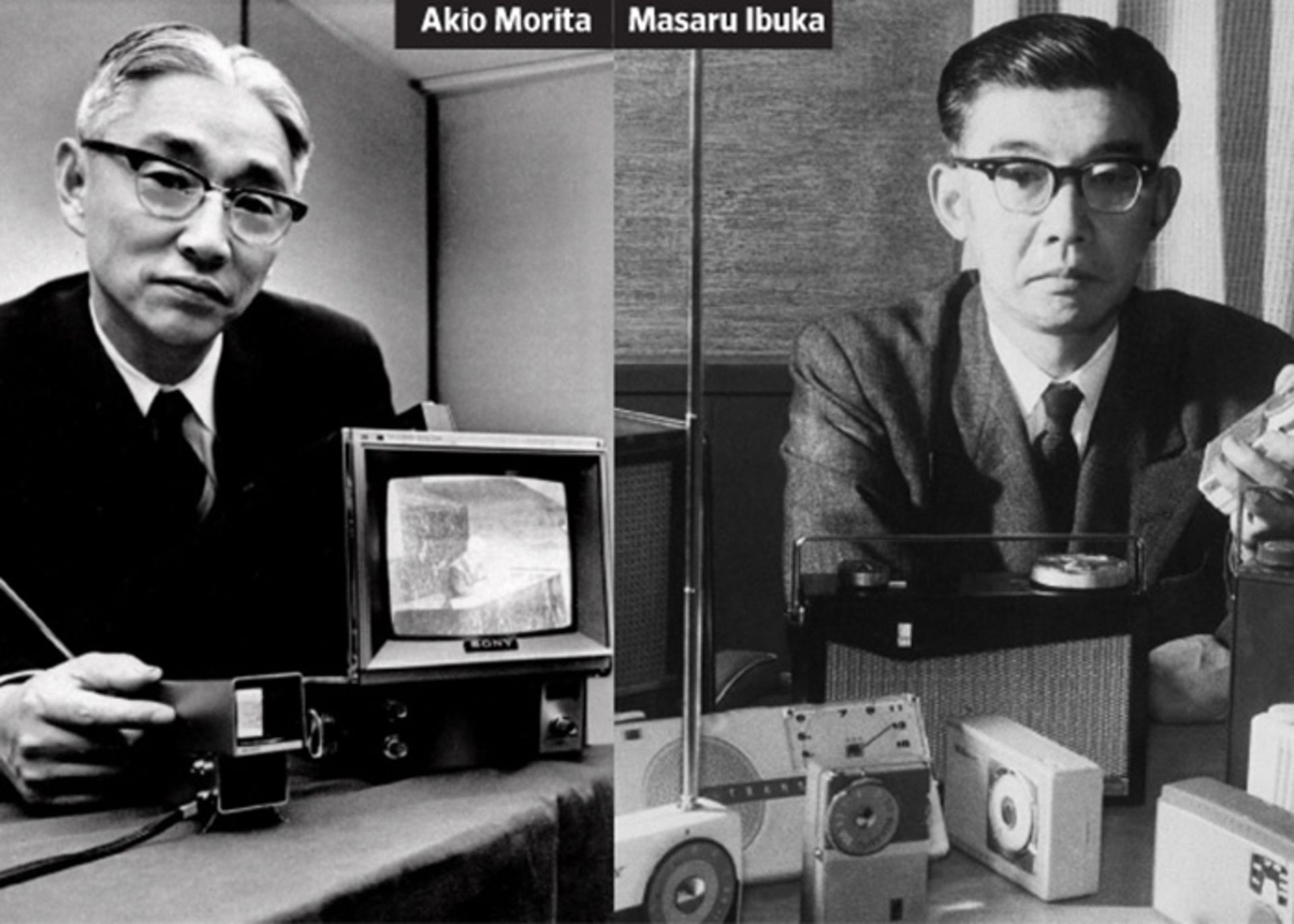
Ibuka and Morita, the founders of Sony Corporation, first met on a research committee studying new types of war weapons.
After some time passed, despite the big age difference, a deep friendship between Ibuka and Morita was formed. After the end of the war, Morita returned to his hometown and the communication between them was cut off. Until one day he read his friend’s name in a newspaper article and called Ibuka. Ibuka also asked him to get to Tokyo as soon as possible to start working with him again.
Sony’s brand name was originally supposed to be TTK or Totsuko
They were looking for a new name to advertise their company globally. Their intention was to choose the abbreviation of the company’s name, TTK, for advertising, but this name was already used. The word Totsuko was also another suggested name. But during his trip to America, Morita realized that it is difficult for Americans to pronounce this name.
They finally chose the name Sony from the combination of 2 words Sonus meaning sound and Sonny meaning young boy. Their purpose in choosing this name was to pronounce it in the same way in all languages of the world.
The company’s first product was a rice cooker, which, contrary to expectations, failed to meet expectations and failed. They did not get discouraged after their first failure and devoted more money to research. They focused on developing products that would benefit the Japanese people.
Sony; The first brand
During 77 years of operation, Sony has been able to launch the first product in many markets of the world. From Japan’s first tape recorder to Japan’s first transistor radio and other products.
Tape recorder

In 1950, the first Japanese tape recorder was made from its American model. This device was also not well received until Sony released a translated version of 999 Ways to Use the tape recorder.
After people became familiar with the product’s uses, the purchase request increased and the Sony tape recorder sold well. The demand for this product increased so much that the company had to expand its facilities to produce orders.
Transistor radio
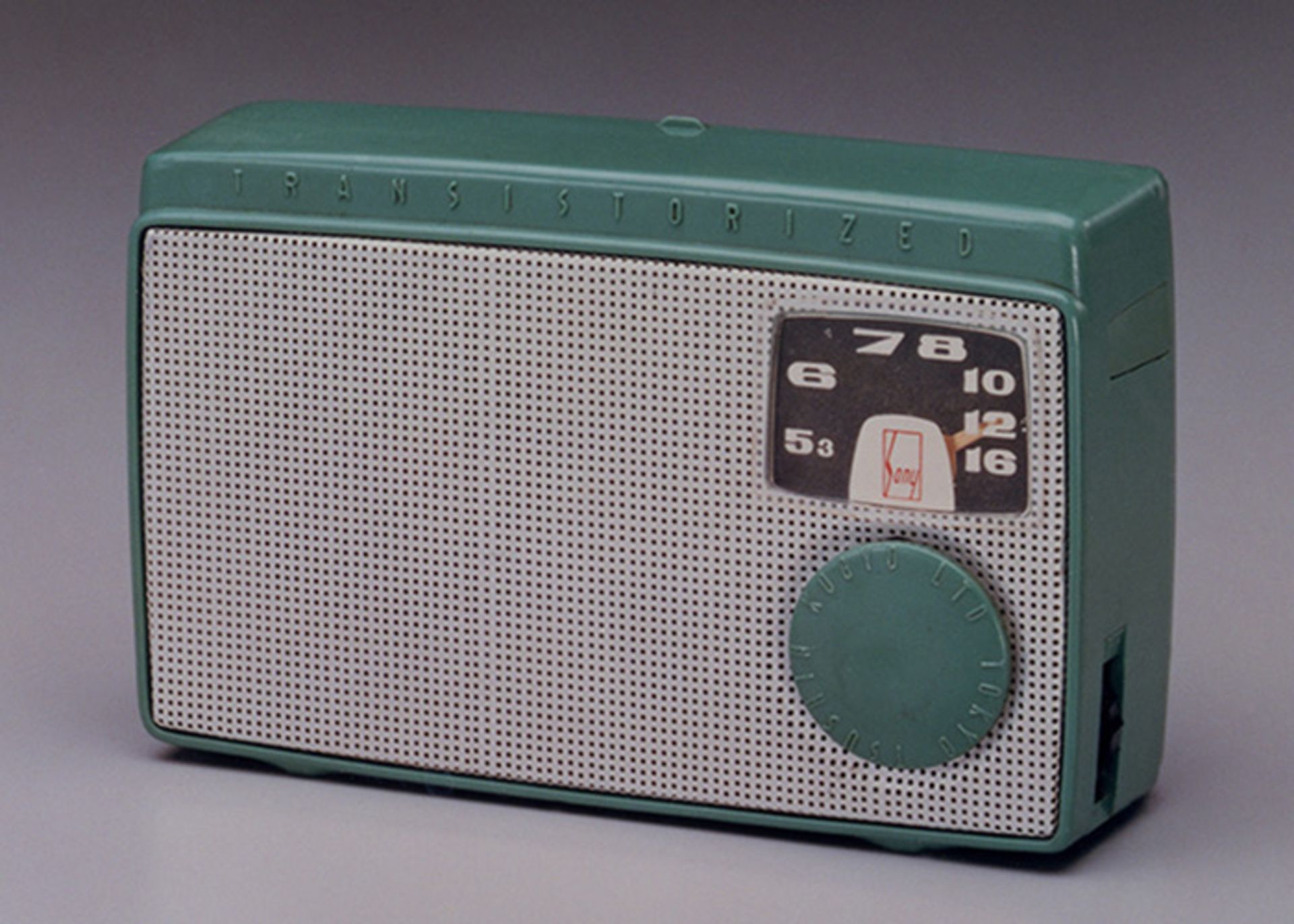
Japan’s first transistor radio was introduced in 1955 by Sony.
Portable TV
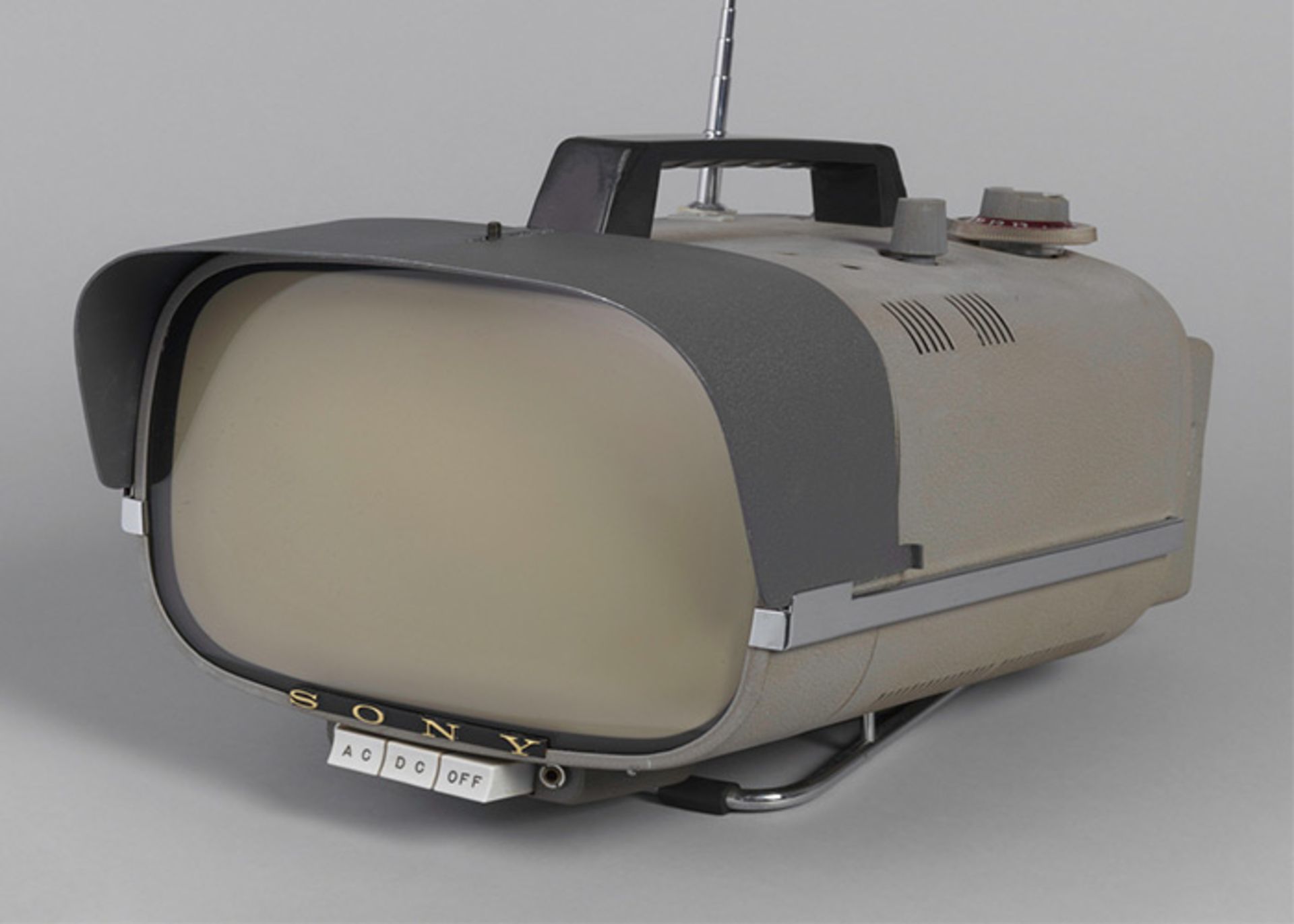
In 1960, Sony released the world’s first portable transistor TV. Sony used radio technology to produce this device.
The televisions of that time were big and in every house, a specific room was reserved for them. But these products brought a new definition of personal televisions to the market.
Video tape player
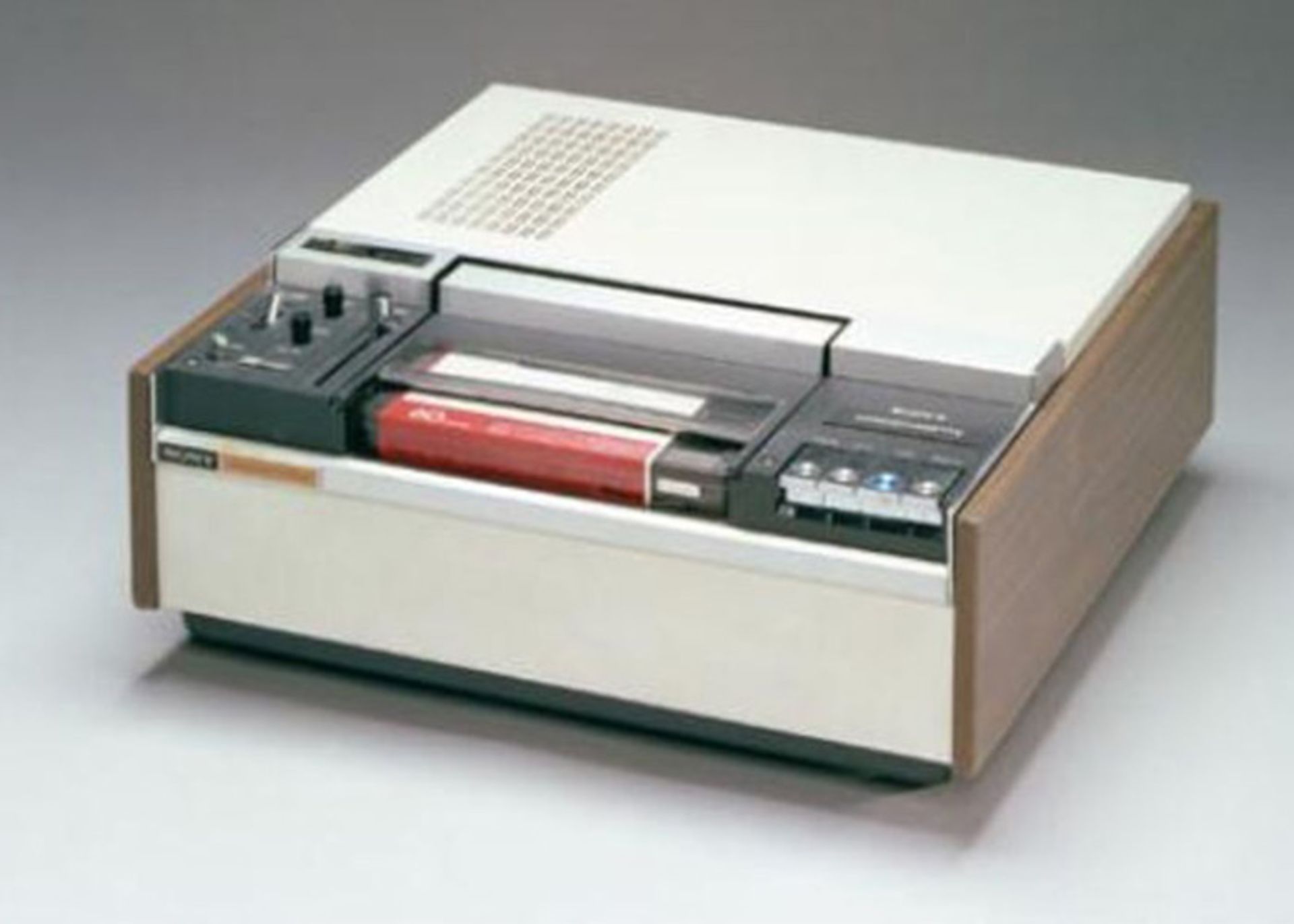
In 1971, Sony unveiled another product. This player was able to show videotapes in color inside the TV.
Masaru Ibuka retired in 1976 and was succeeded by Akio Morita as CEO.
The first generation Walkman

In 1979, Sony launched the first generation of Walkmans. These devices were portable and customers could listen to their favorite cassettes anywhere.
Many employees of the company believed that this device could not become popular among people without the ability to record sound. But contrary to their belief, this device introduced a new and successful lifestyle among people and achieved remarkable success.
The first CD player
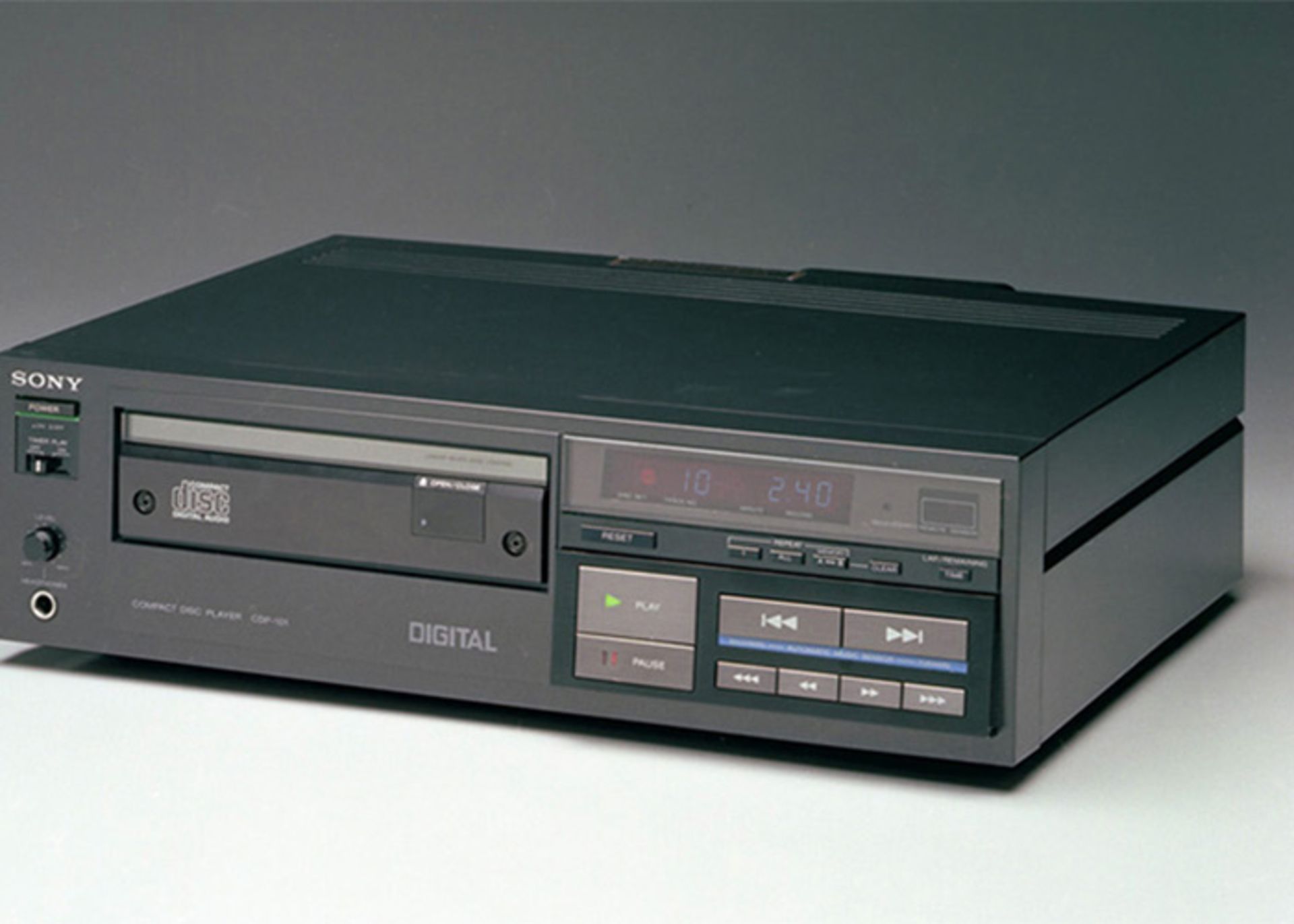
The world’s first CD player was launched in 1982 by Sony.
One of Sony’s senior managers, Norio Oga, was elected as the company’s CEO in 1989. Sony bought Columbia Pictures in the same year. This action was considered the biggest purchase of a Japanese company at that time.
PlayStation
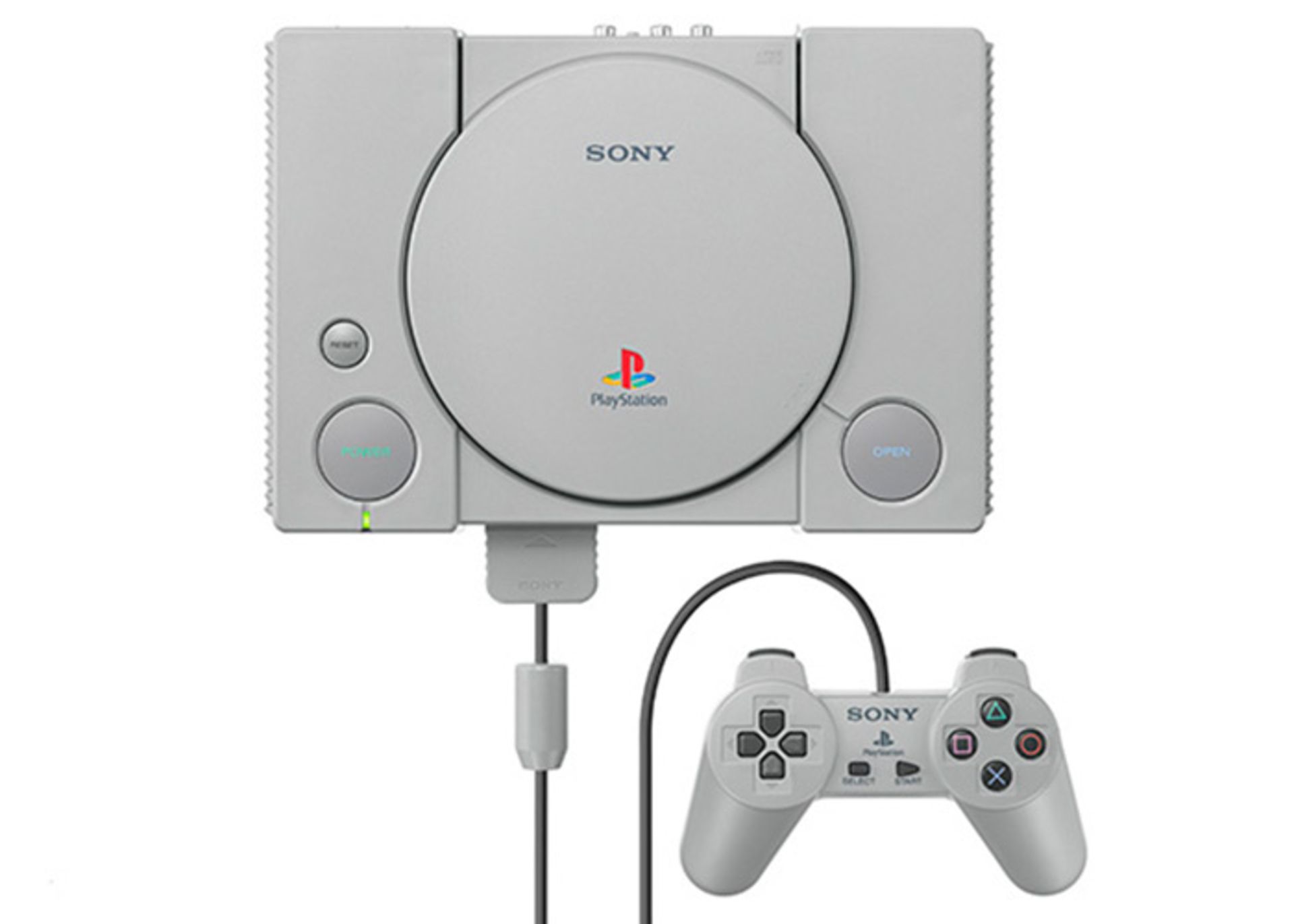
PlayStation is another important product of Sony. This product was sold in the Japanese market in 1994 and entered America and Europe in 1995.
PlayStation became so popular among people that its sales reached 10 million units by the end of 1996, and in 1998, about 50 million of this console had been sold. The production of new models of this product continues and today PlayStation 5 is considered the newest Sony console.
Digital camera
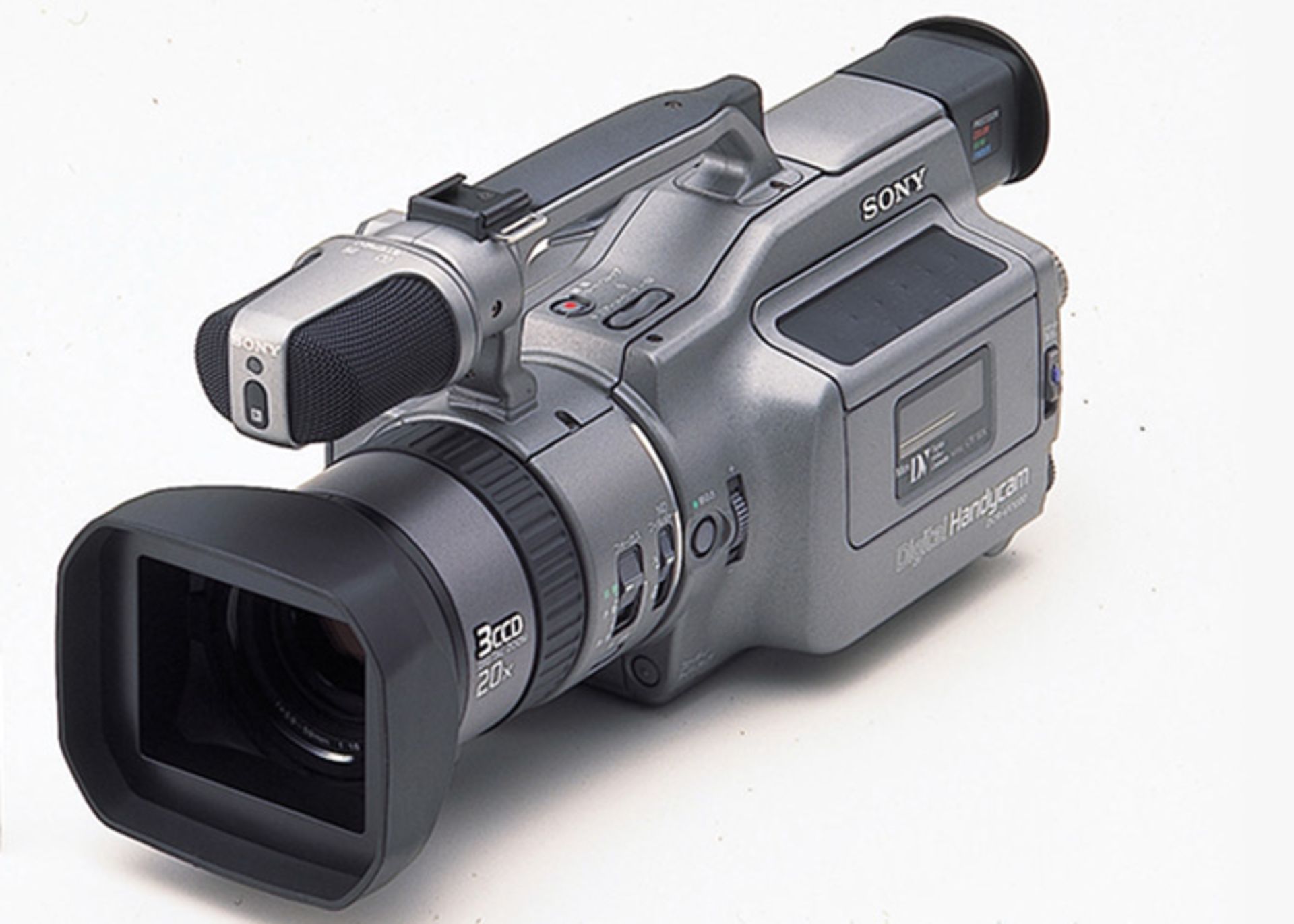
The first digital camera was launched by Sony in 1995. This device was very well built and recorded high-quality videos.
Sony Mobile
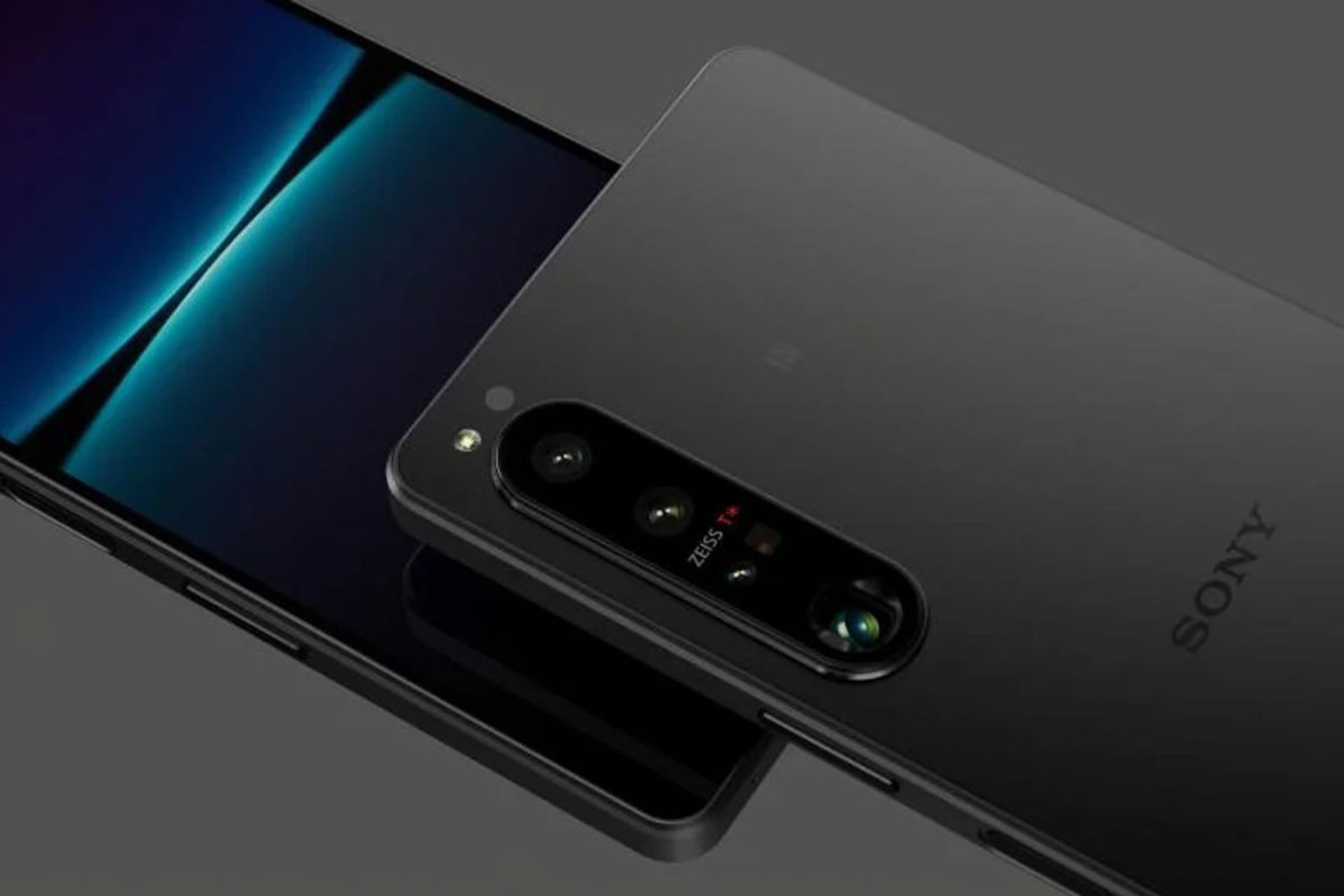
Sony Mobile Company started working in 2001 in cooperation with Ericsson. The company’s products were first marketed under the name of Sony Ericsson until Sony bought Ericsson’s shares in 2012. Since then, the phones of this company have entered the market under the name of Sony.
In 2012, Sony was able to win the title of the fourth mobile phone manufacturer. Xperia series mobile phones are the current flagships of this company. The Xperia brand doesn’t sell much at the moment, but Sony continues to produce products.
Vaio laptop
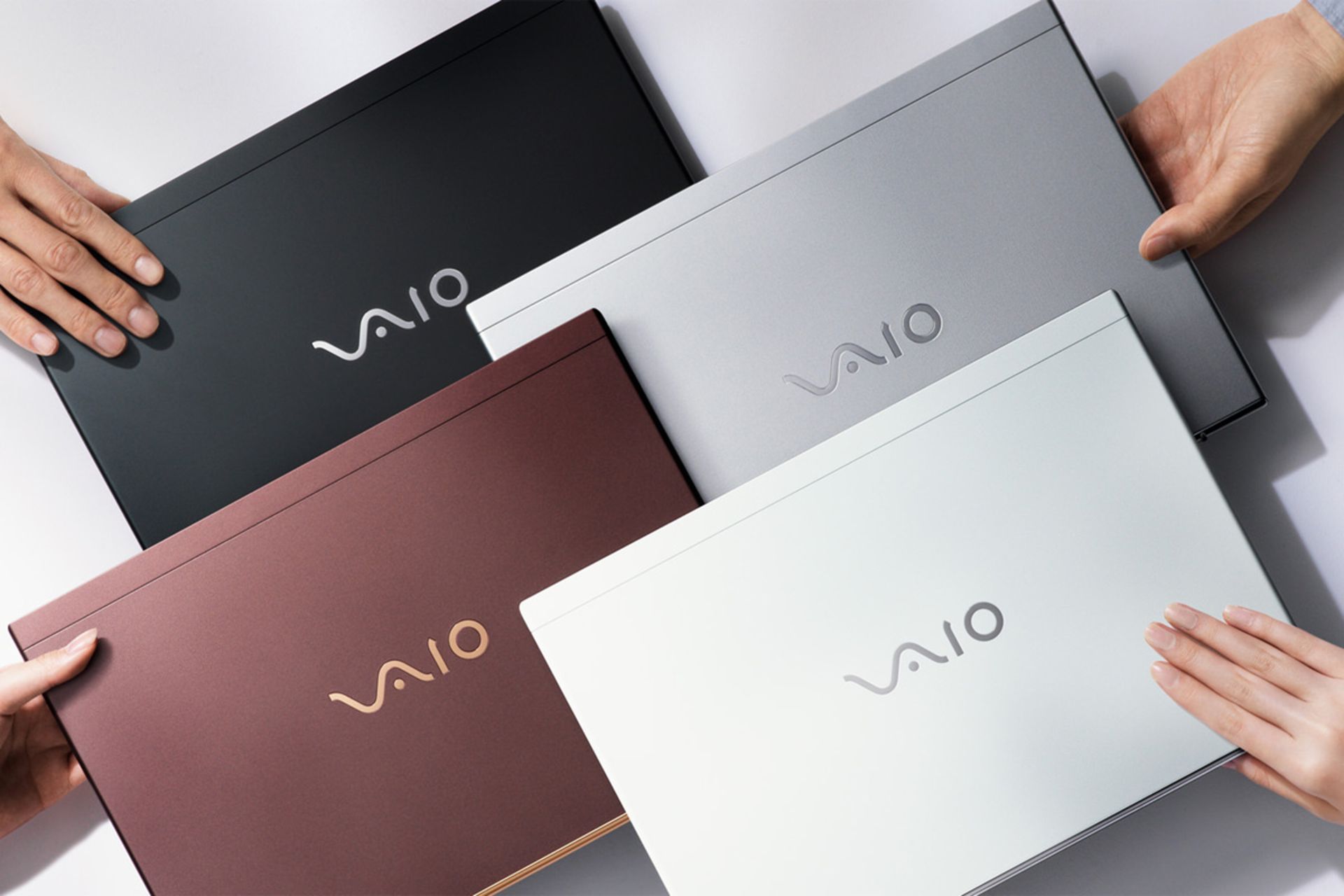
The first generation of Vaio laptops was launched in 1997. These laptops had a slim body and introduced a new concept of personal computers to the world.
Personal life of Masaru Ibuka

Masaru Ibuka was born on April 11, 1908 in Nikko, Japan. He graduated from the university in 1933 and worked in a film production company. Ibuka joined the Navy during World War II and was a member of the investigative committee; But after some time in 1945, he left the war to start his own radio repair workshop in Tokyo.
At that time, people followed the news of the world through the radio. As a result, starting a radio-related business was a good idea for a company. Ibuka and Akio founded Sony in 1946. Ibuka used transistors to make his company’s products. Therefore, Sony was introduced to the world as one of the first companies to use this technology for non-combat purposes.
Ibuka was a member of the Navy during World War II
In 1976, Ibuka was awarded an honorary doctorate from the University of Tokyo. He received two other honorary doctorate degrees in 1979 and 1994 from Tokyo and American universities.
Ibuka published a book titled “Kindergarten is Too Late” in 1971. In this book, he claimed that the most important time for human learning is from birth to three years old. As a result, he has suggested ways to teach skills to children at this time.
Ibuka was the leader of Sony until 1976 and then he retired; But even after that, he had a close relationship with company managers and guided them. He died in 1997 at the age of 89 due to heart failure.
Personal life of Akio Morita
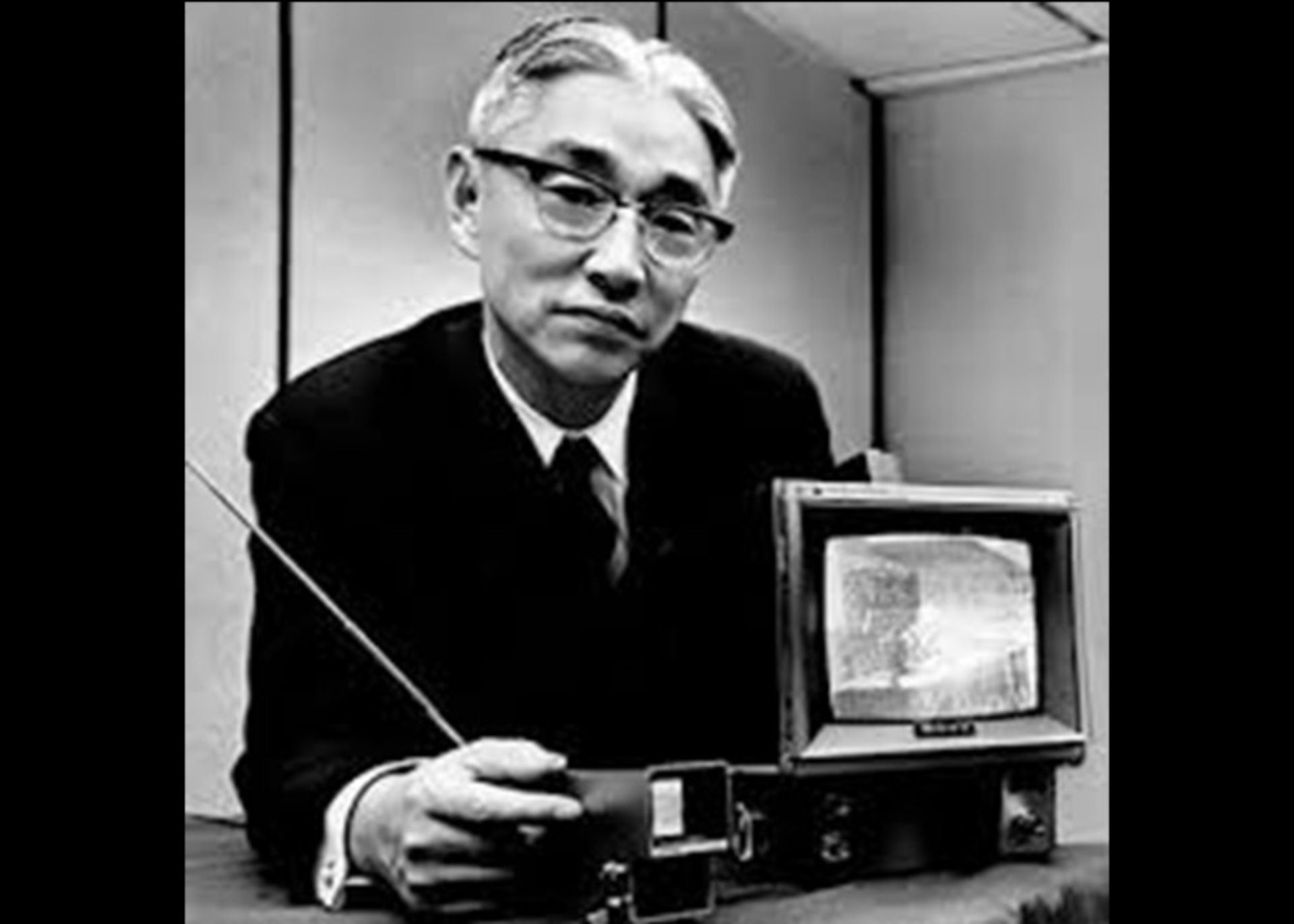
Akio Morita was born on January 26, 1921 in Japan. He was the eldest of his four siblings. As a result, his father trained him to manage the family business.
Akio was very interested in mathematics and physics and graduated from university with a degree in physics. During World War II, he became a member of the Japanese Army’s Research Committee, and while serving, met his future business partner, Masaru Ibuka.
Morita was a huge fan of all Sony products and worked hard to promote them. For example, the size of their first production radios was slightly larger than the standard shirt pocket size. Because they wanted to market their products as pocket radios, Morita made shirts for their employees with larger pockets to show customers that these radios were pocket radios.
Sony established its first branch in America in 1960. Sony was the first Japanese company to enter the US stock market. In 1994, Morita suffered a stroke while playing tennis and resigned from the chairmanship of Sony. He finally died of pneumonia in 1999 at the age of 78.
Sony failures
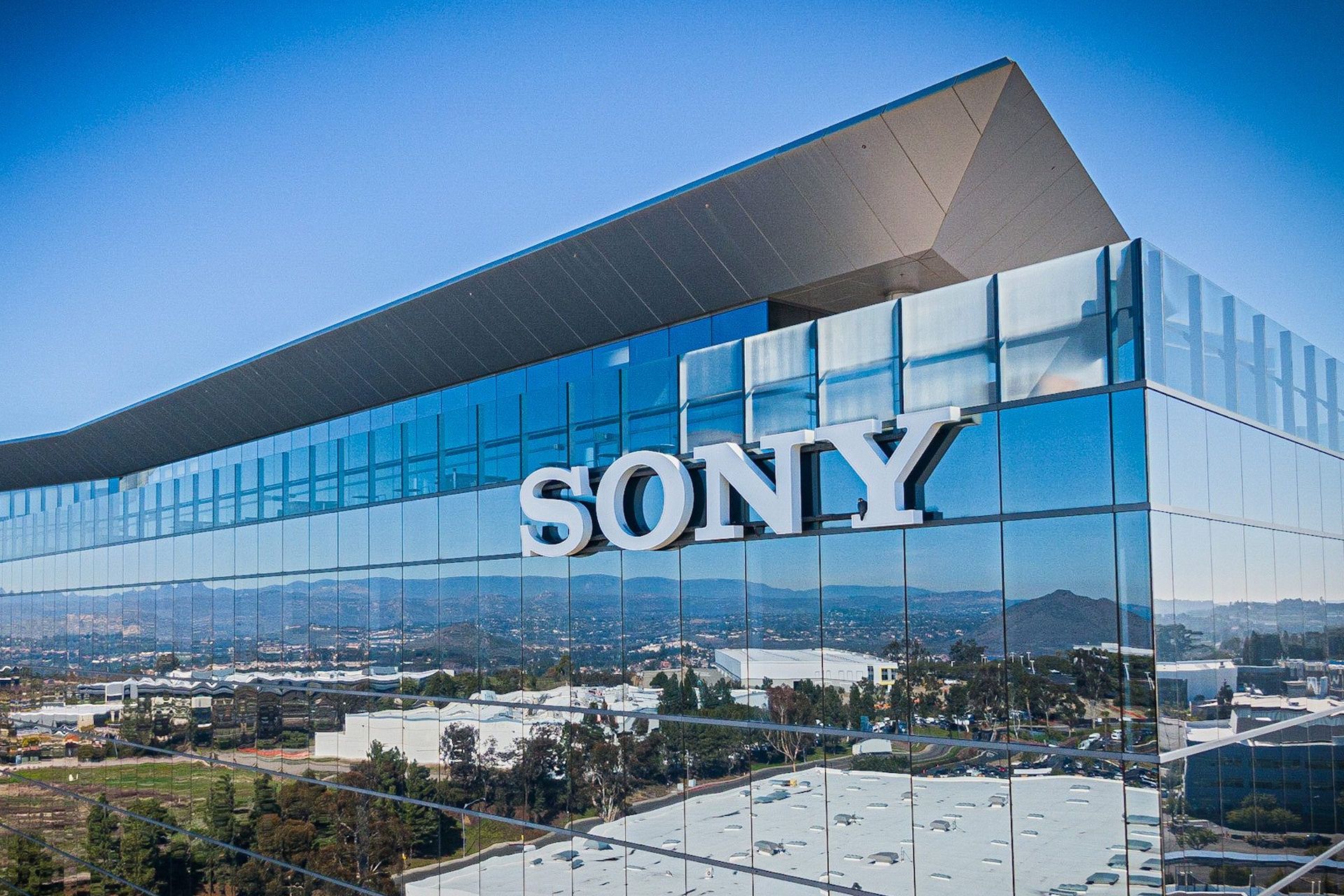
Since its establishment in 1964, Sony has produced successful and innovative products. Many of these products were entering the market for the first time, and as a result, they introduced a new concept of technology to the world; But no success story is without failures.
Sony Aibo

Sony robots were launched in 1999. These robots were in the form of cute dogs and had the power to learn. These robots could show emotions such as happiness, sadness, anger, surprise, fear and disinterest.
Sony robots were sold at a price of $2,500 and were very popular among their owners. But its high price prevented it from increasing its popularity and eventually, Sony stopped production.
Vaio music device
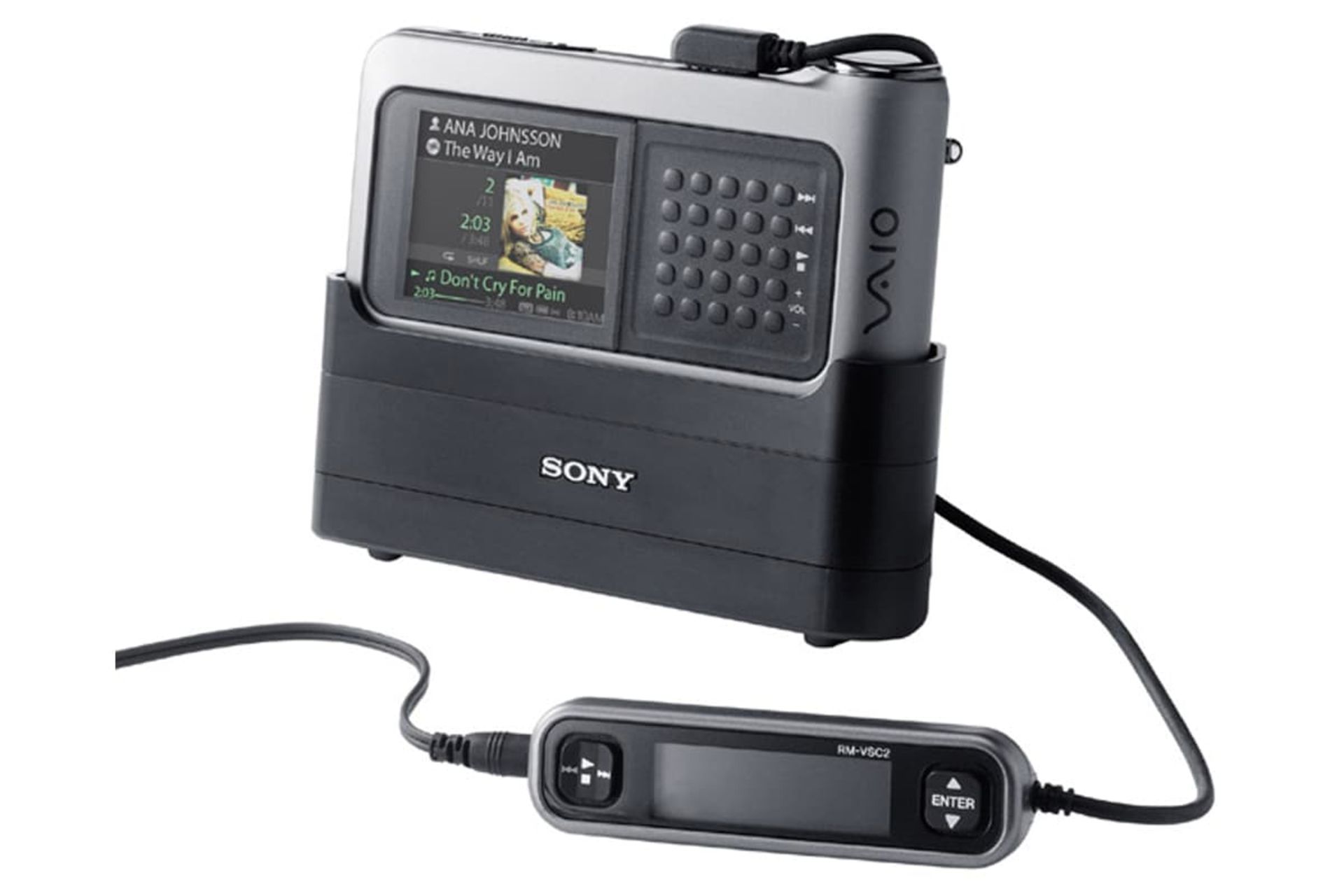
In 1979, Sony introduced a new concept of portability to the market by presenting its Walkman. The company had been Apple’s fierce competitor in digital music for two years, but its first product did not perform well.
The biggest mistake of the company was the dependence of files on the ATRACT format. Files with this format could only be used in Sony minidiscs. The ability to share files was the first word in digital music in 2000, and all files were released in MP3 format. As a result, this issue became a big challenge for Sony.
Sony e-Villa
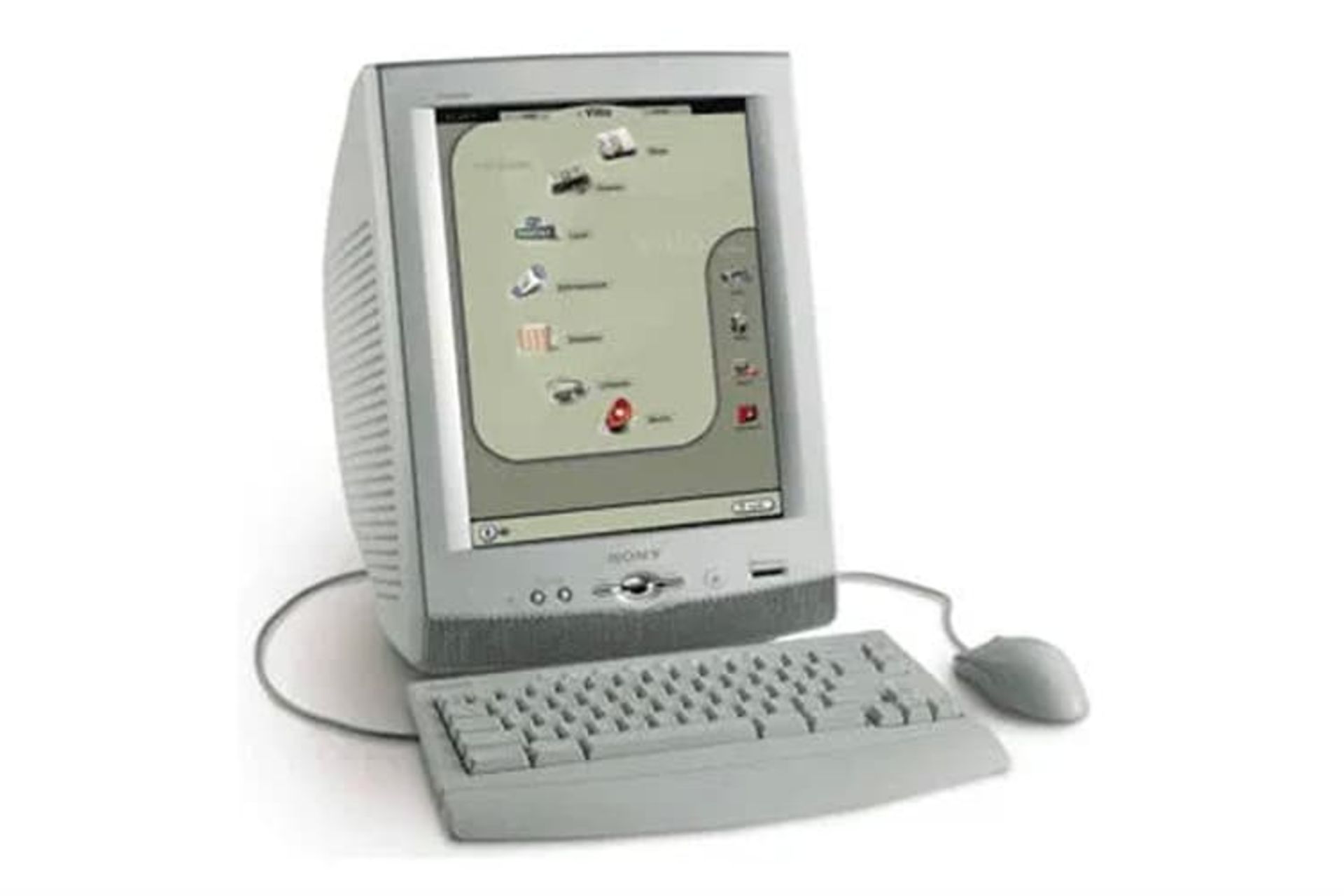
In 2001, many companies were offering Internet home appliances, including dedicated terminals for accessing the Internet and web browsers. Sony e-Villa was also a product that was launched with the same purpose.
The e-villa had a 15-inch monitor and a 56 kbps dial-up modem. e-Villa was designed to have access to email services and websites. At that time, there was a lot of competition between these devices and people preferred to use devices with Windows XP. As a result, Sony stopped the production of these products after three months.
Sony Airboard
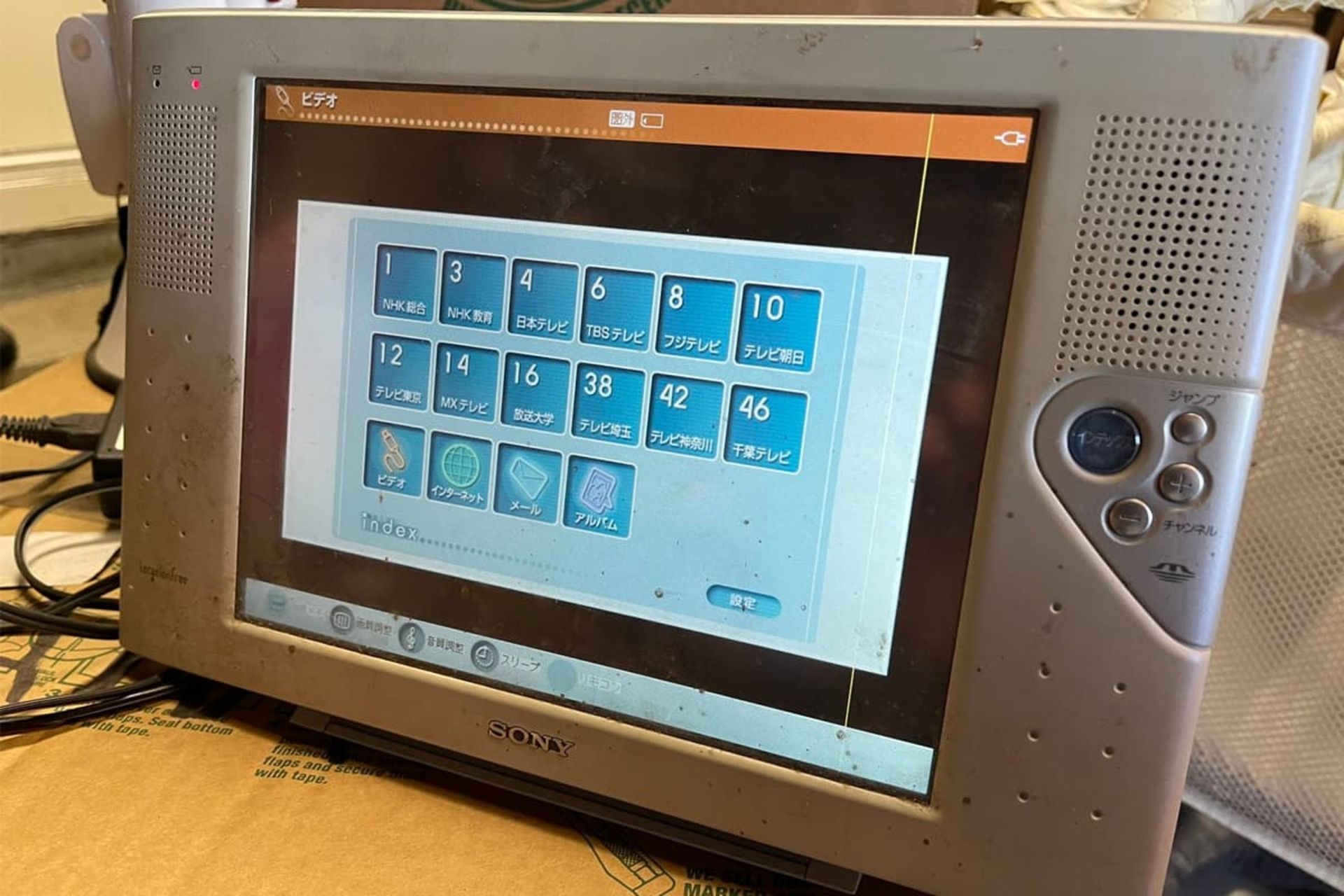
10 years before people became interested in watching videos on tablets, Sony launched a device called Airboard. The tablets of this family were 10 inches and had the possibility to connect to Wi-Fi and broadcast TV channels.
Using the picture-in-picture feature, users could search the Internet and watch TV. This device never caught on because people thought it was just a portable and expensive TV. Therefore, its production was stopped before entering the American market.
Sony PSX
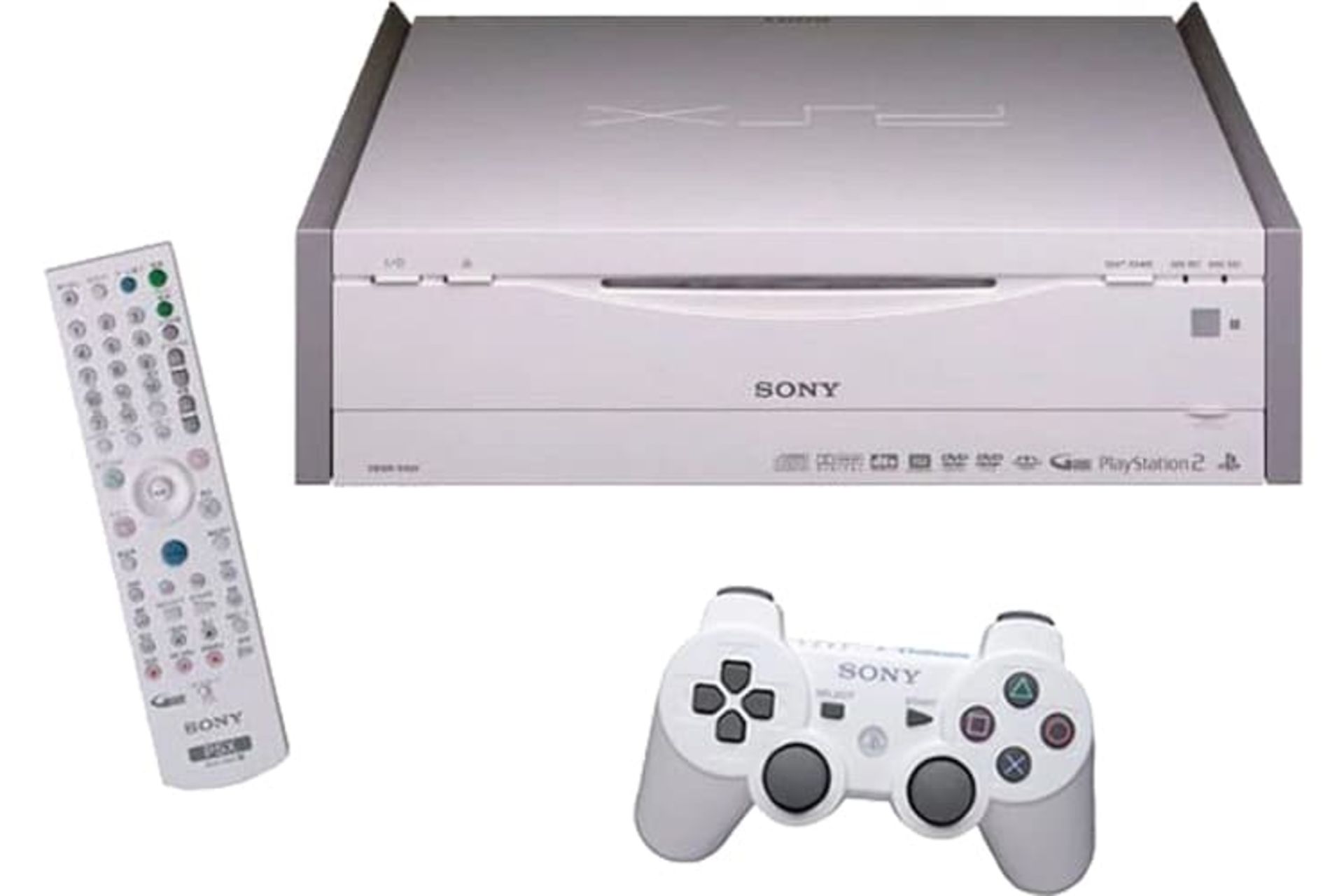
In 2003, Sony combined its two products, the PlayStation 2 and the video recorder, and marketed it as a single product. Using this product, customers could record the TV show on the storage memory or DVD at the same time as the game experience.
But the PSX, which was released only in Japan, was much larger and heavier than the PlayStation. Although this product did not have a high price, it could never attract many customers.
The current state of the Sony brand

Sony is one of the largest Japanese companies by revenue. The company reached the peak of profitability in the 1990s and 2000s due to the launch of its PlayStations, but faced financial problems in the late 2000s.
Read more: Samsung brand story; Full-view mirror of Korea’s commercial history
The global financial crisis, increased competition with PlayStation, and the earthquake in Japan in 2011 went hand in hand with Sony experiencing major failures for three years.
Due to the negative effects caused by natural disasters and exchange rates, the Times magazine called Sony a lack of flexibility and inability to measure the economy, but Sony was able to overcome all the crises in all these years by using innovation and became one of the top companies in the world. become in the television industry.
Sony’s current slogan is Be Moved, and the company aims to emotionally excite its customers with every product it offers.
Sony was able to pocket an operating profit of 1.21 trillion yen (about 8.9 billion dollars) in fiscal year 2022, which is a new record. Sony’s revenue in the final quarter of last year grew by 35 percent to about 3.06 trillion yen ($22.5 billion).


Adjective: The greatest; the best.
Pronoun: The greater part of a group, especially a group of people.
Noun: The greatest amount.
Noun: The greater part.
Noun: A record-setting amount.
How did the people of the past imagine the future?
How can you explain to people in the 1900s that a robot can sweep floors and carpets without any intervention by drawing a map of your house without sounding crazy?
To people of the last century, our technology today seems like magic; But that doesn’t mean they didn’t fantasize about what the future would be like. Many inventors and artists have depicted their own predictions of future technology. Let’s look at these paintings and then comment on their scope.
 Bird postman – 1892
Bird postman – 1892
The potential of human flight was one of the concerns of futurists. It is true that aviation has revolutionized our world, but the type of flying equipment and “flying cars” that captured the imagination a century ago will remain for the future.
One of the important innovations that the minds of the ancients often did not imagine is the Internet and modern wireless communications. In today’s world, the flying postman pictured here would probably be out of a job thanks to plain old email.
 Electric floor washer (electric scrubber) – 1899 | The vacuum cleaner was invented just two years after this image was made.
Electric floor washer (electric scrubber) – 1899 | The vacuum cleaner was invented just two years after this image was made.
The idea of a robot vacuum cleaner, now a reality in millions of homes, was apparently beyond imagination in the late 19th century.
 Machine learning-1901
Machine learning-1901
According to this prediction, teaching was supposed to become a very easy job by the year 2000. The principal simply feeds the history books into the machine, while an assistant (or perhaps a student being punished?) turns the handle and somehow wires the contents of the books to the headsets the students are wearing, and from there into their minds. sends Do you understand the necessity of the presence of the school principal in this process?
 Phone with photo – 1918
Phone with photo – 1918
The arrival of video-calling technology was predicted more than a century ago. The Electrical Experimenter magazine wrote in 1918: “Many inventors have attempted to invent a device or machine by which one person can see another while talking on the telephone.” According to the author of the magazine, such a device, which should naturally be called a “telephot”, will be invented sooner or later, because “everyone would like to have such a device.”
 Video call – 1942
Video call – 1942
Another article in the magazine Practical Electrics in 1942 predicted a similar device with moving pictures so interesting it is admirable.
 wheel of destruction
wheel of destruction
During World War I, specialized technology magazines were full of ideas that were hoped to bring an end to the long conflict. One of these inventions was the gyro-electric destroyer. “This 45-foot monster is steered by a large gyroscope wheel,” Electrical Experimenter magazine reported. “The destroyer travels at a speed of 40 to 60 miles per hour and because of its large diameter it easily rolls over trenches and other obstacles.”

The vision envisions a robot dog that readers can build for themselves; A wheeled device that operates with batteries and follows its owner’s metal cane through a magnet. It may have a cute face but don’t expect this dog to roll over, play, or react if something bad happens to you.
The idea of artificial pets doesn’t seem so strange nowadays. This is a concept that exists mostly in the field of cyberspace, exemplified by digital home assistants and artificial intelligence-based video game characters.
 Climate control – 1954
Climate control – 1954
The dramatic image above shows how future humans will be able to control the weather. This article describes an airplane that is dispatched to disperse a cloud that threatens to form a tornado. “In the age of the hydrogen bomb and supersonic flight, it’s possible that science will find ways not only to destroy tornadoes and hurricanes but also to influence weather conditions in ways that will boggle the imagination,” the magazine reports.
Read more: The future of generative artificial intelligence from its own language
 Food planning by computer – 1967
Food planning by computer – 1967
In 1967, Philco-Ford, a maker of electrical goods, produced a short film called 1999AD, showing how its future products might transform ordinary homes. The family in the film owns a space-age car, a large wall-filling television, and a large home computer that helps the family (specifically the mother) plan their meals. In the film, we see the father of the family using the computer to check the invoice for the clothes he bought online.


Do animals have an understanding of the concept of death?


What is Kali Linux? Everything you need to know about this popular but mysterious distribution


Sony Brand Story; From the production of rice cookers to becoming one of the most famous companies in the world


How did the people of the past imagine the future?


Mammoth and dodo return to nature


Canopus; What do we know about the second brightest star in the sky?


How to use iMessage on Android?


Can humans endure the psychological torment of living on Mars?


Xiaomi Glorimi M2 Max watch review; Alternative economic option for iPhone owners


Artificial intelligence problems; Frauds based on artificial intelligence and methods to deal with them
Popular
-



 Technology1 year ago
Technology1 year agoWho has checked our Whatsapp profile viewed my Whatsapp August 2023
-



 Technology1 year ago
Technology1 year agoSecond WhatsApp , how to install and download dual WhatsApp August 2023
-



 Technology1 year ago
Technology1 year agoHow to use ChatGPT on Android and iOS
-



 AI2 years ago
AI2 years agoUber replaces human drivers with robots
-



 Technology1 year ago
Technology1 year agoThe best Android tablets 2023, buying guide
-



 Technology1 year ago
Technology1 year agoThe best photography cameras 2023, buying guide and price
-



 Humans2 years ago
Humans2 years agoCell Rover analyzes the inside of cells without destroying them
-



 Technology1 year ago
Technology1 year agoHow to prevent automatic download of applications on Samsung phones
